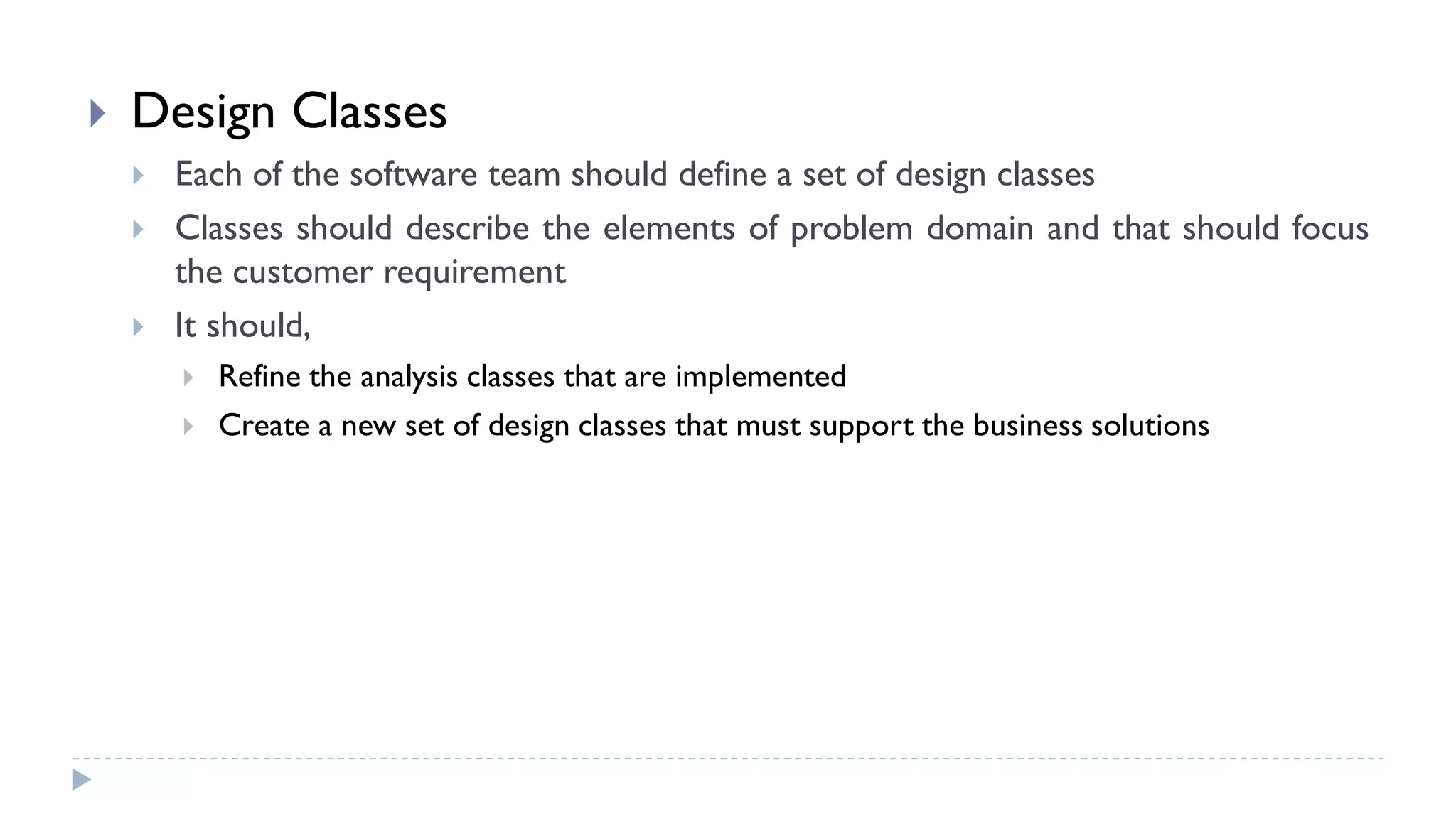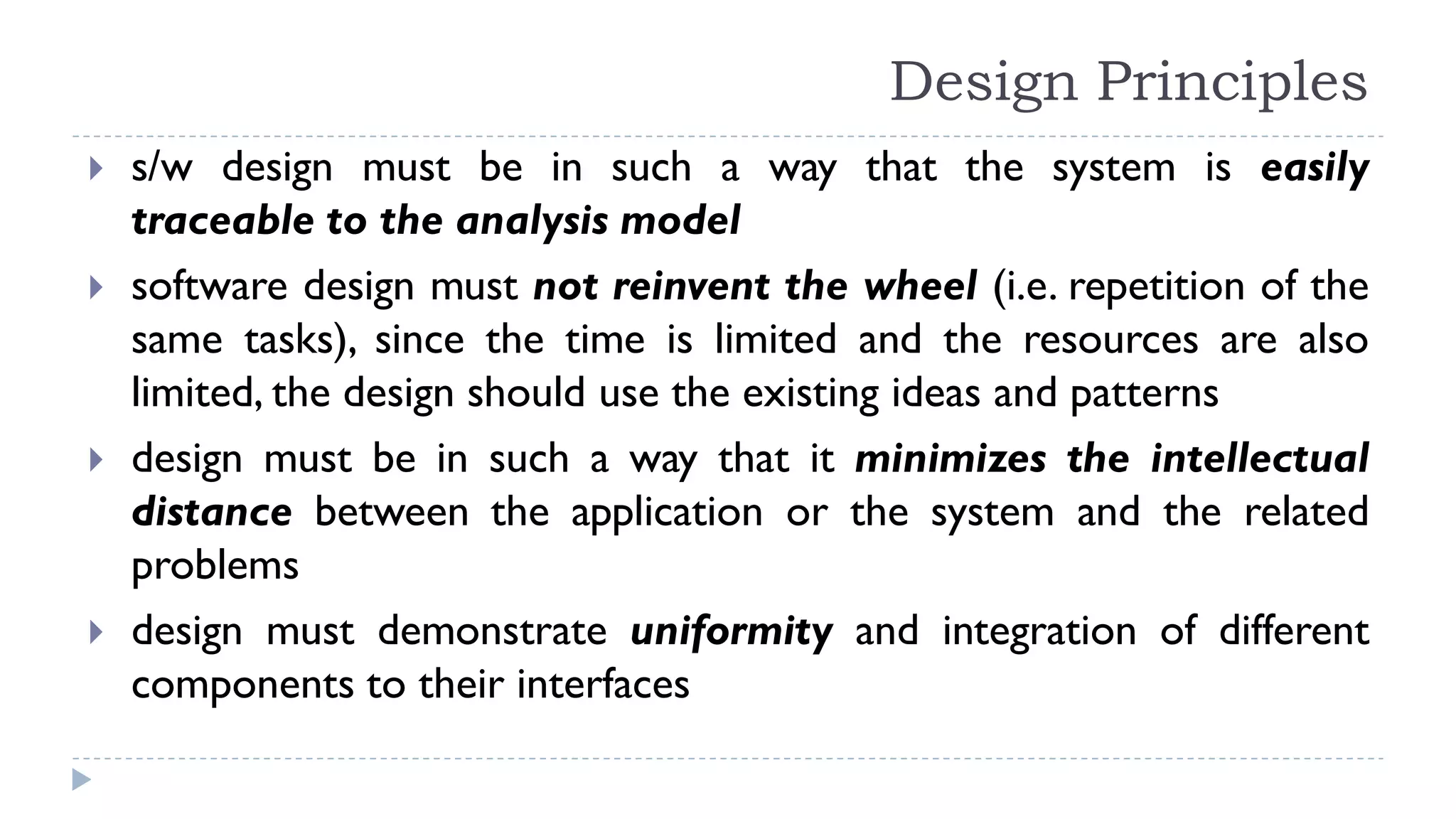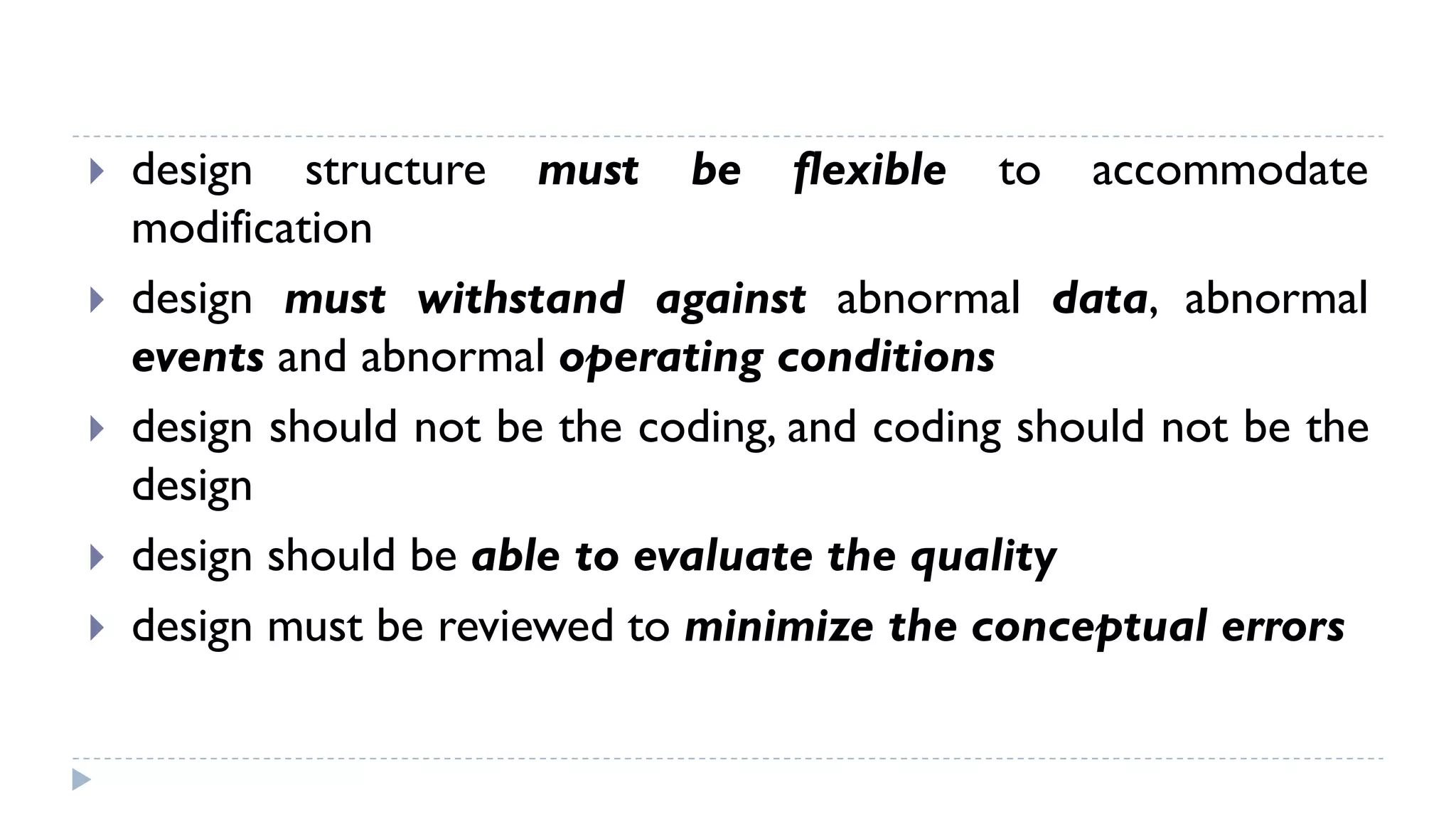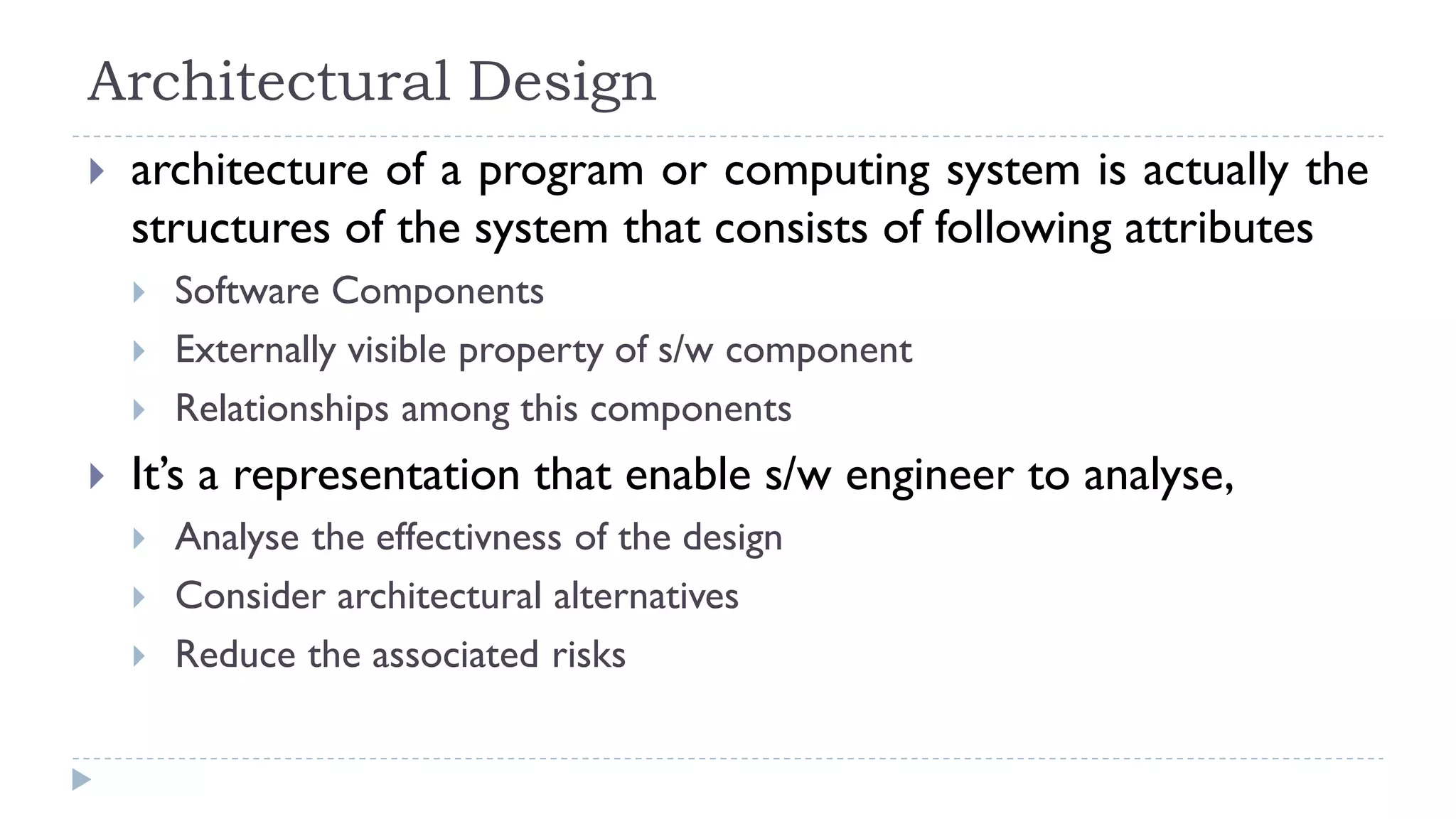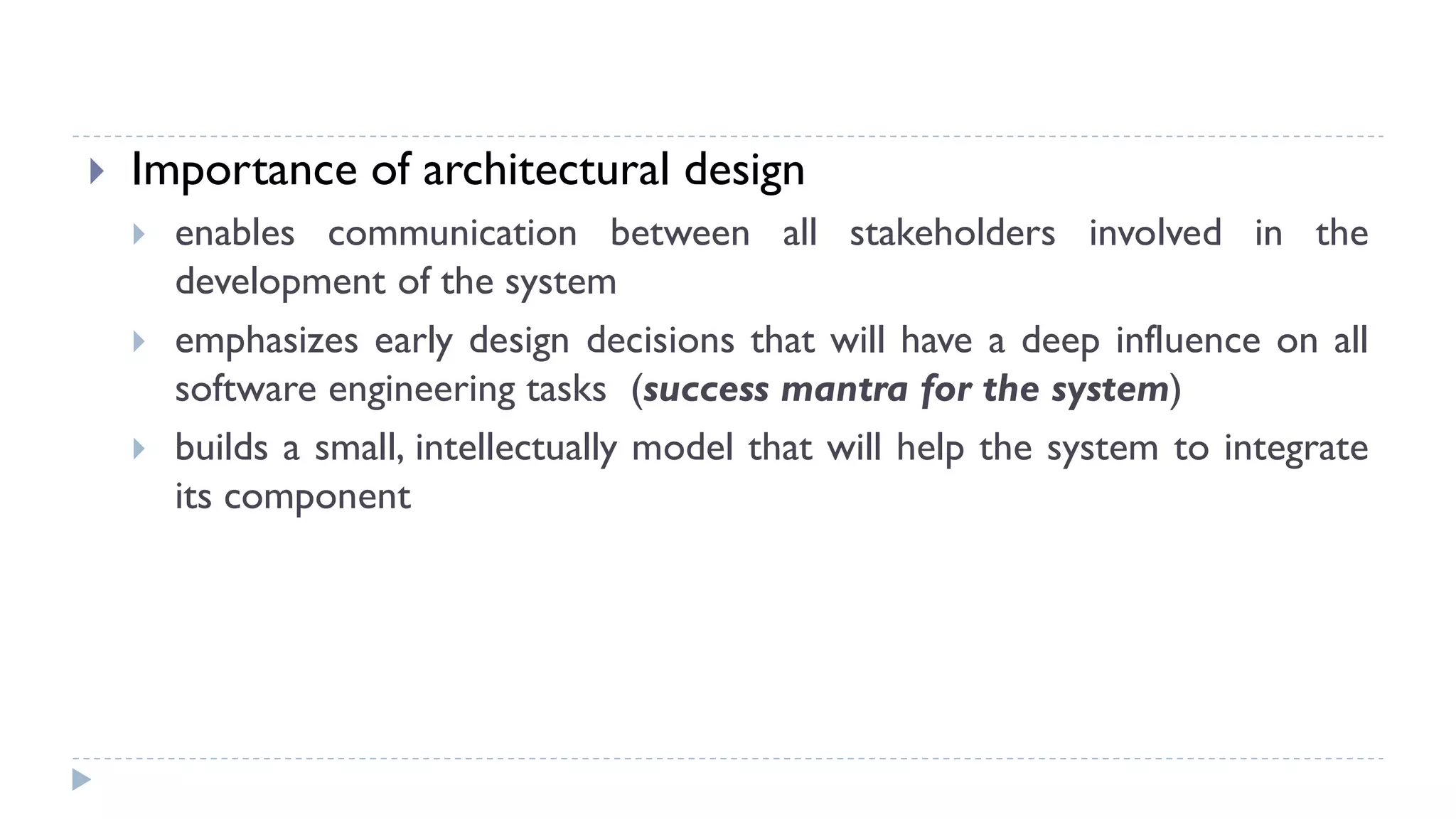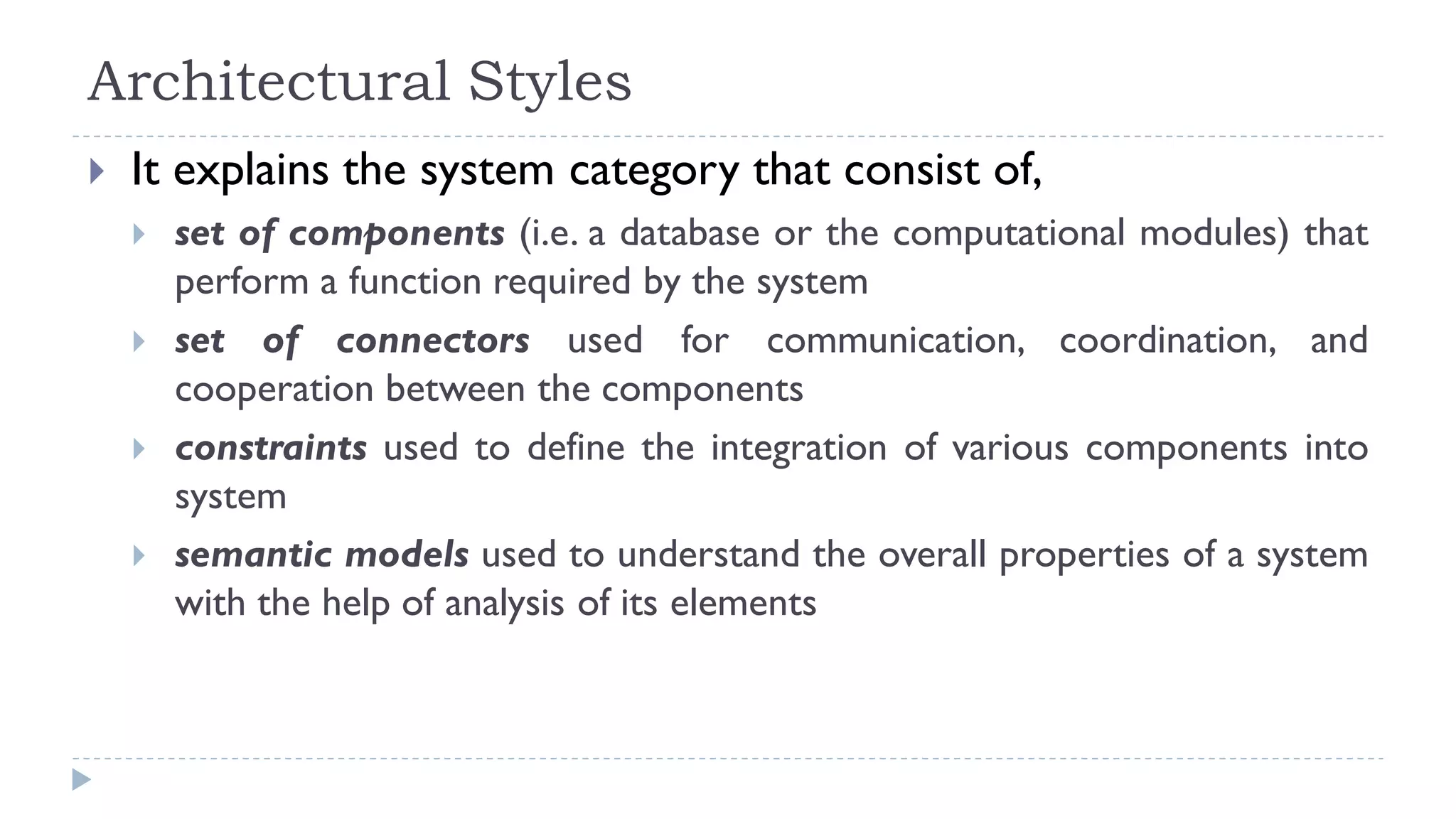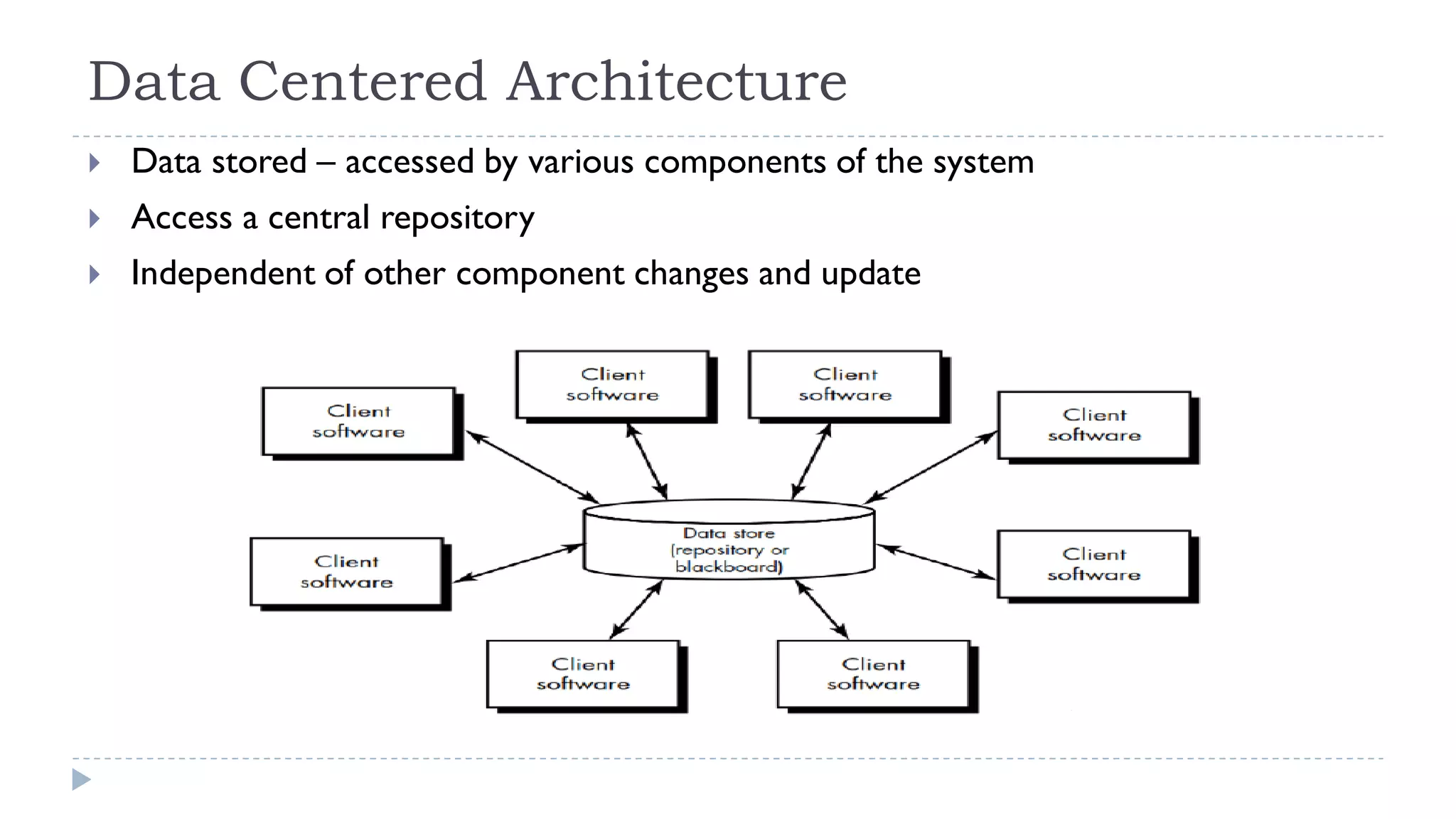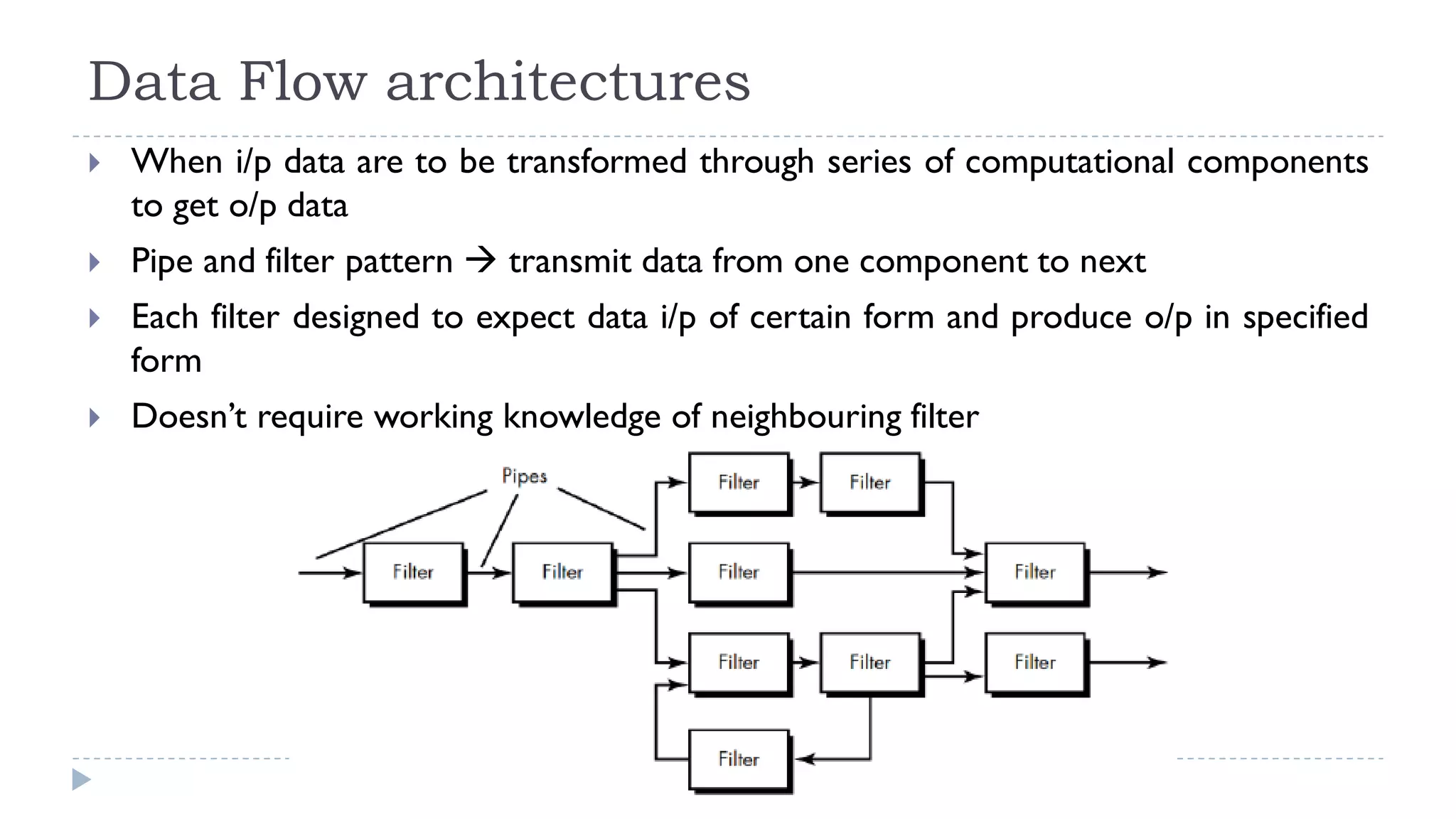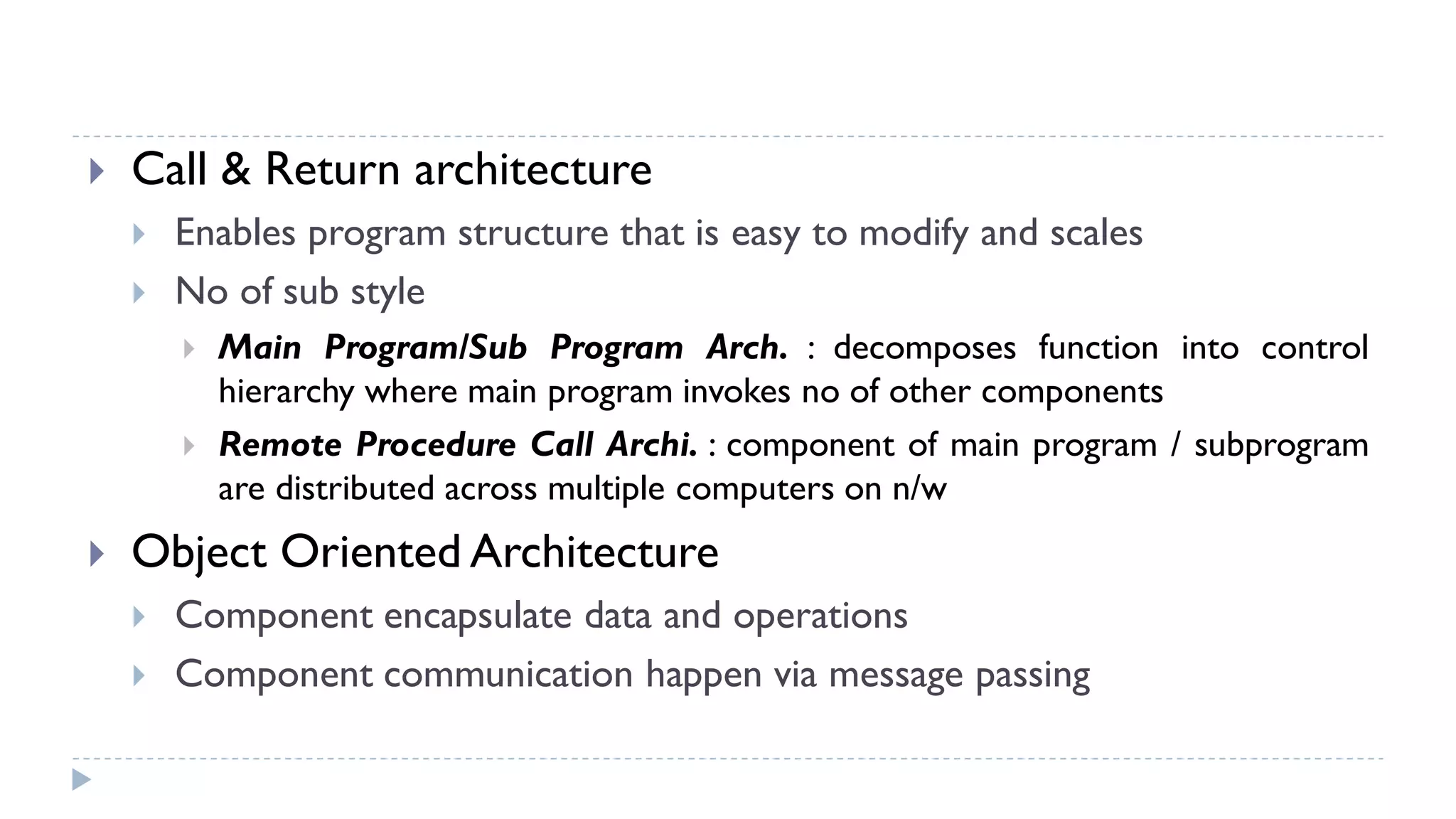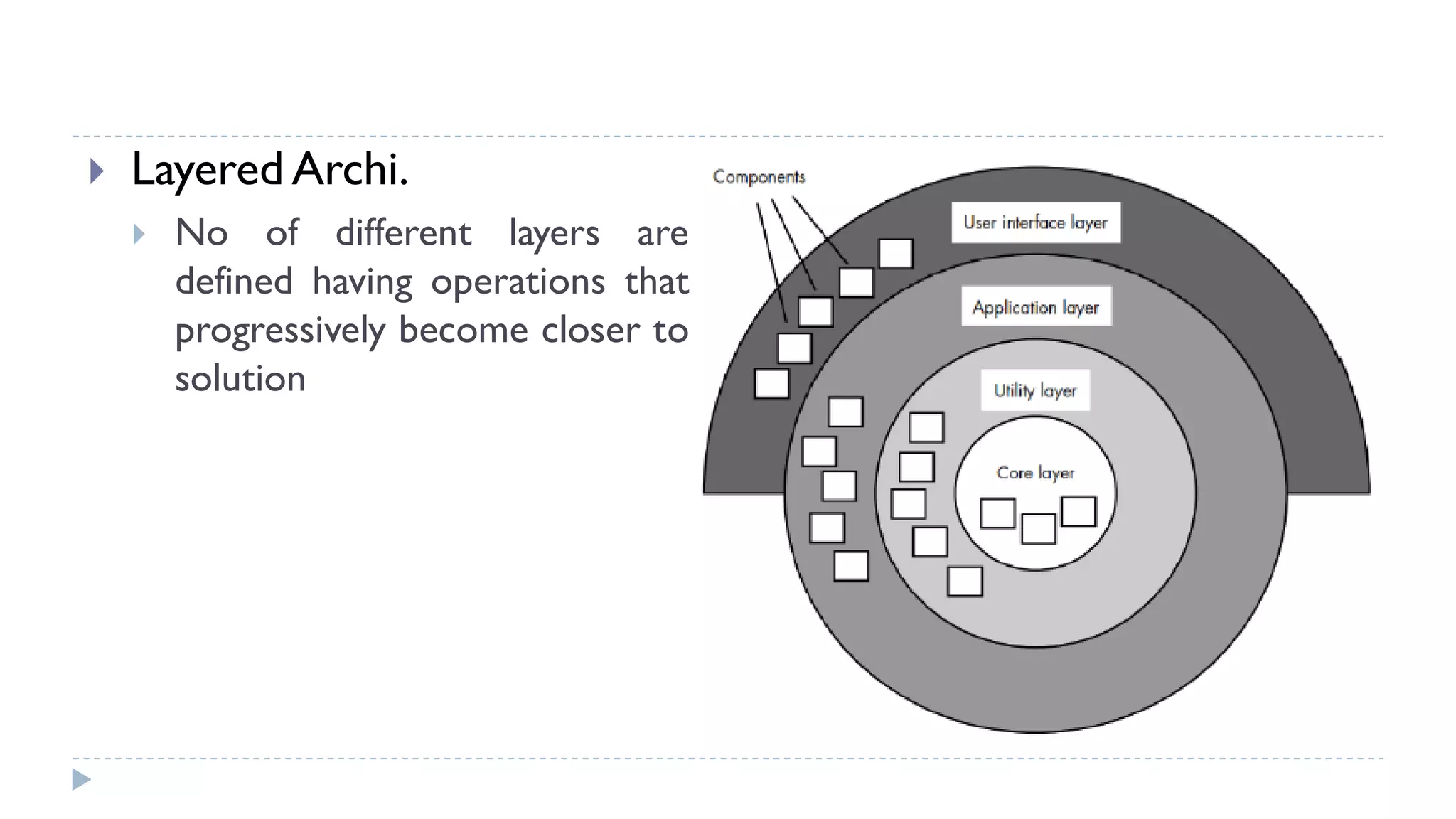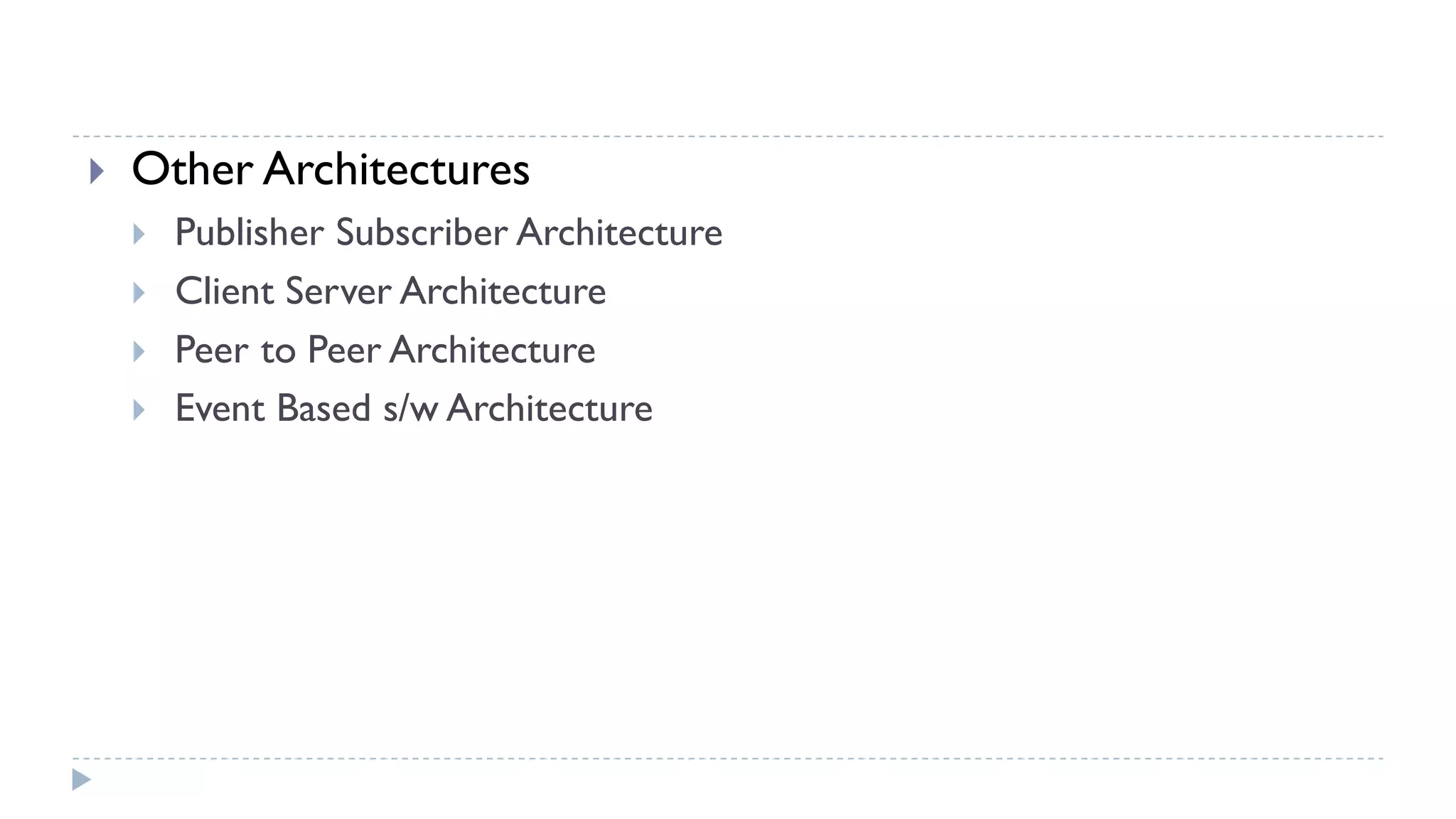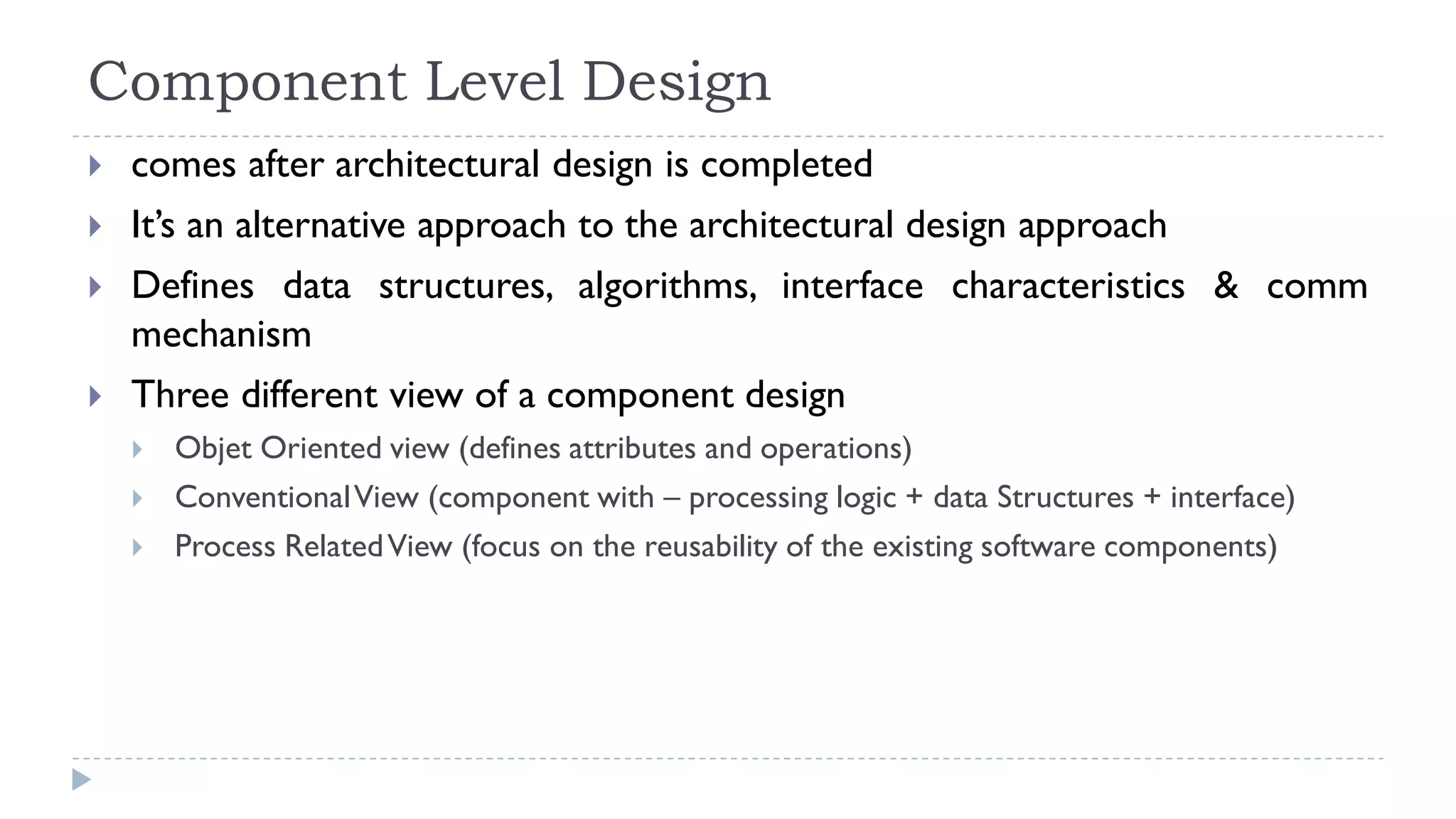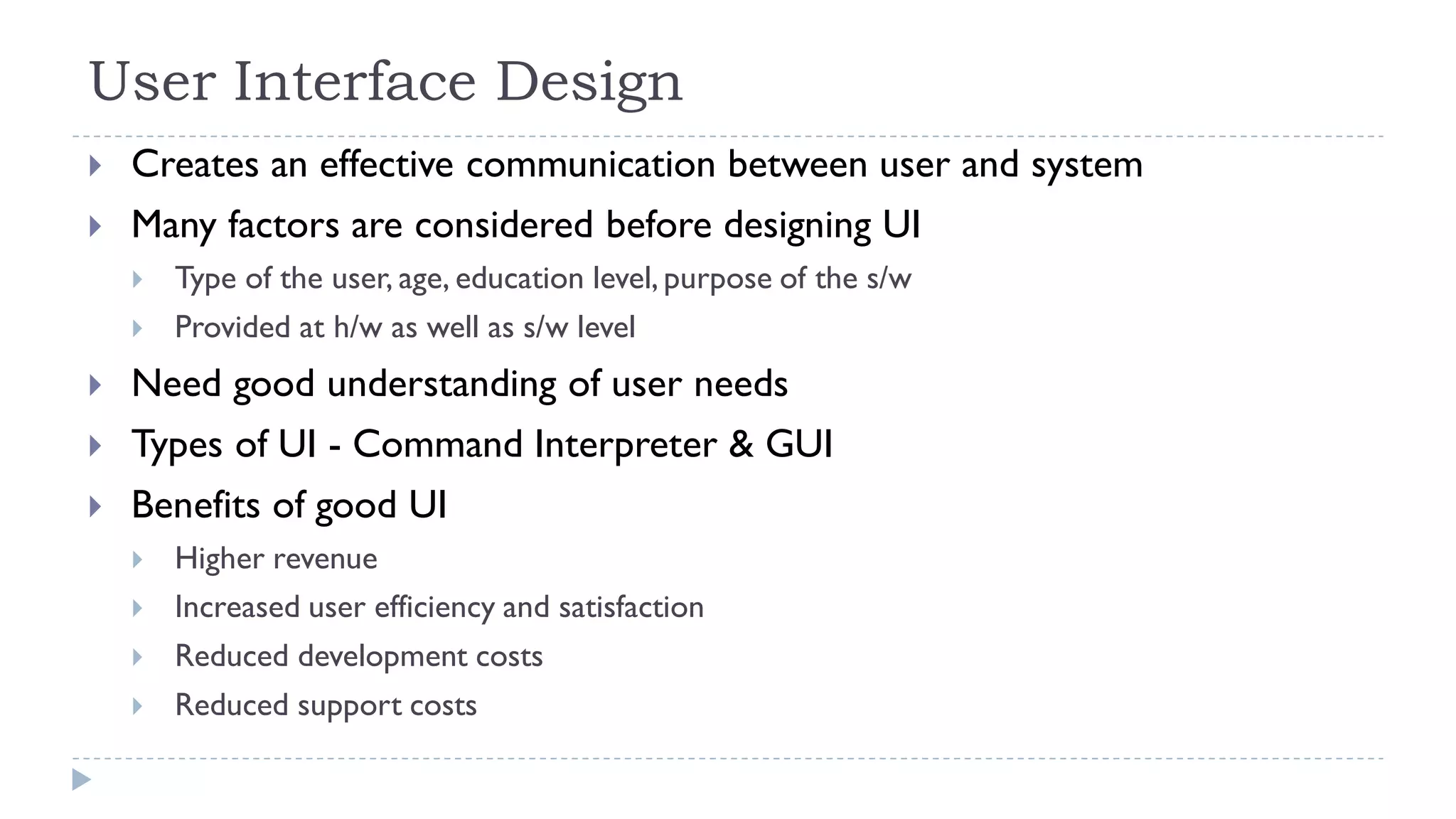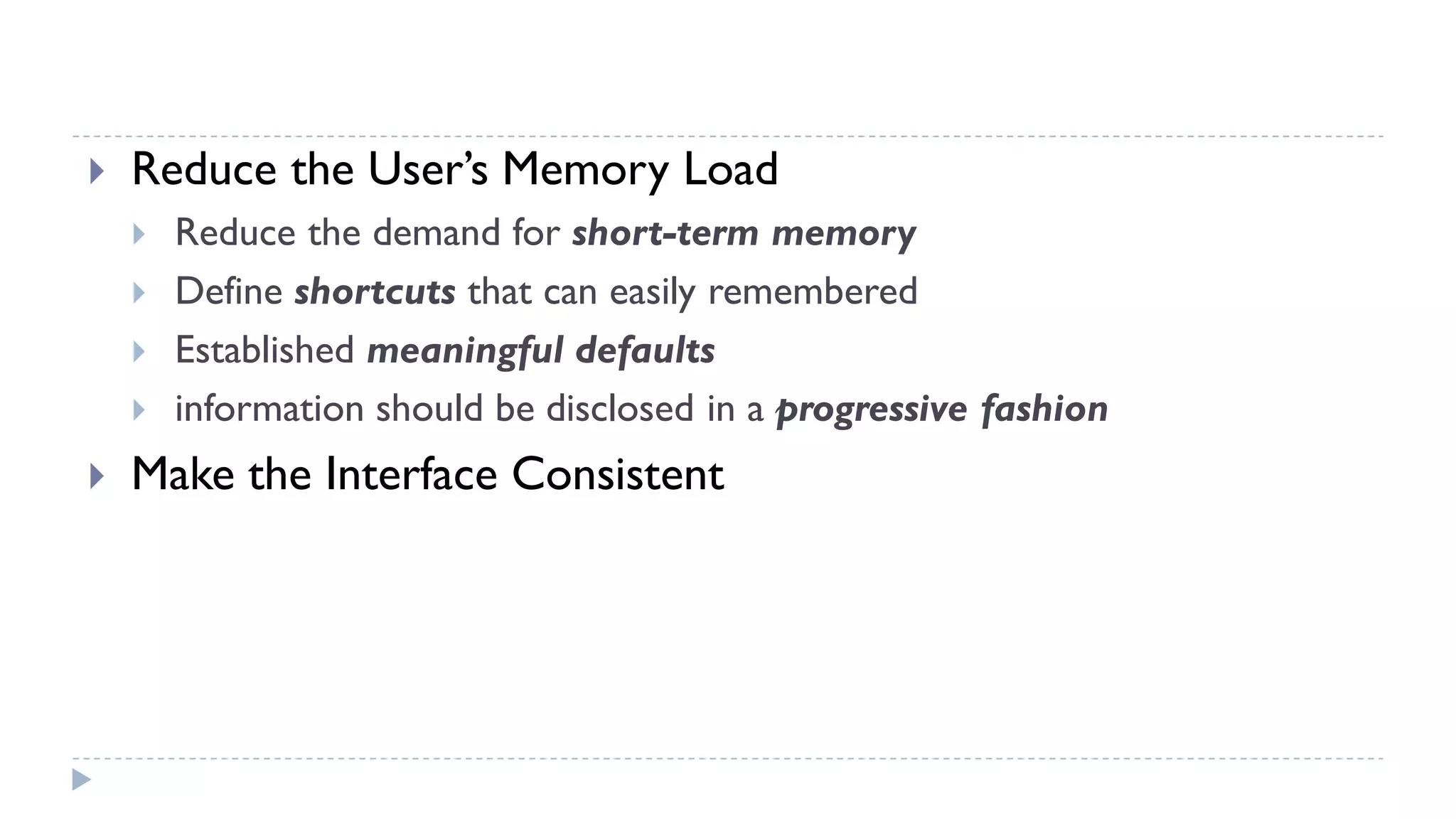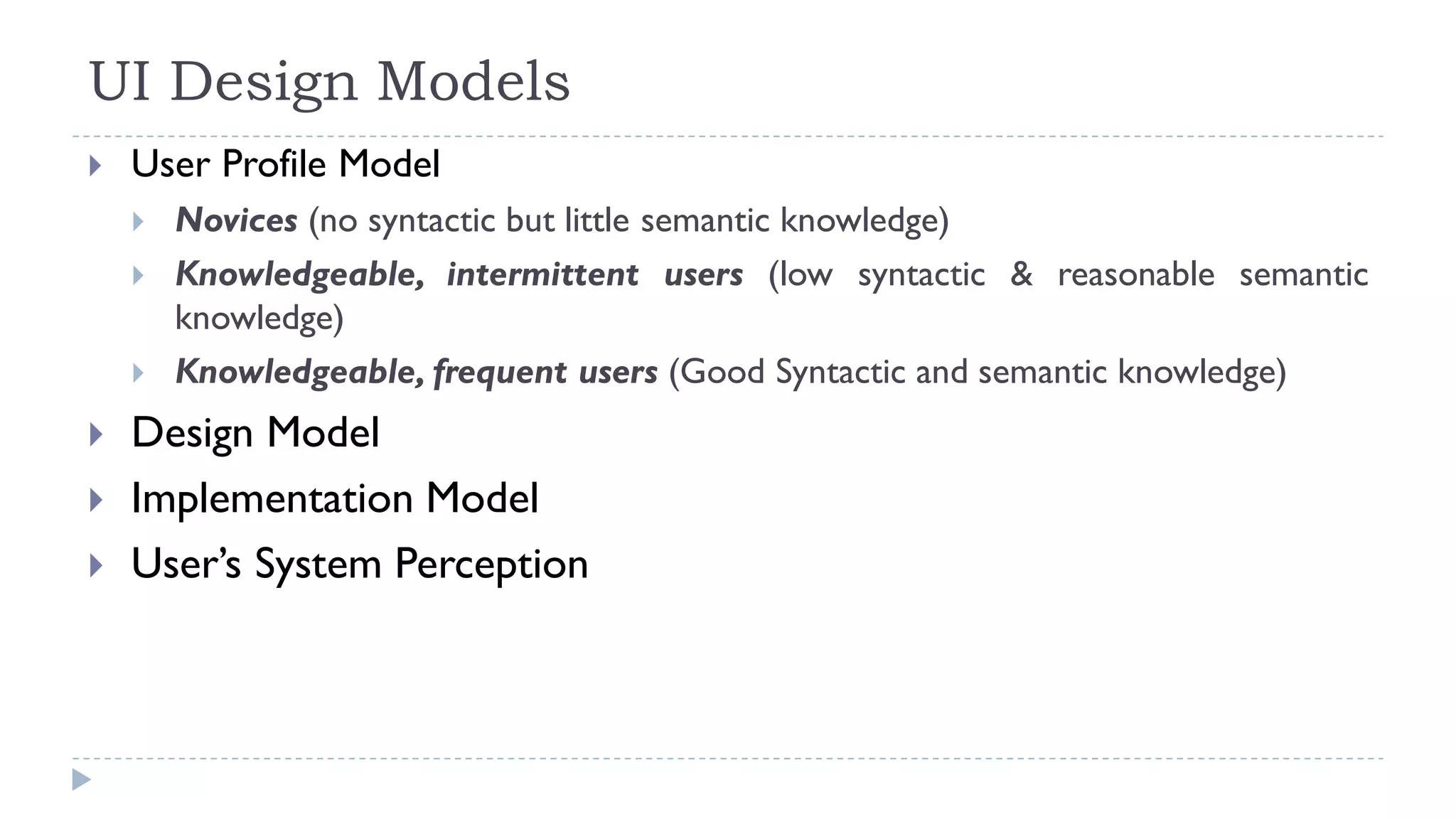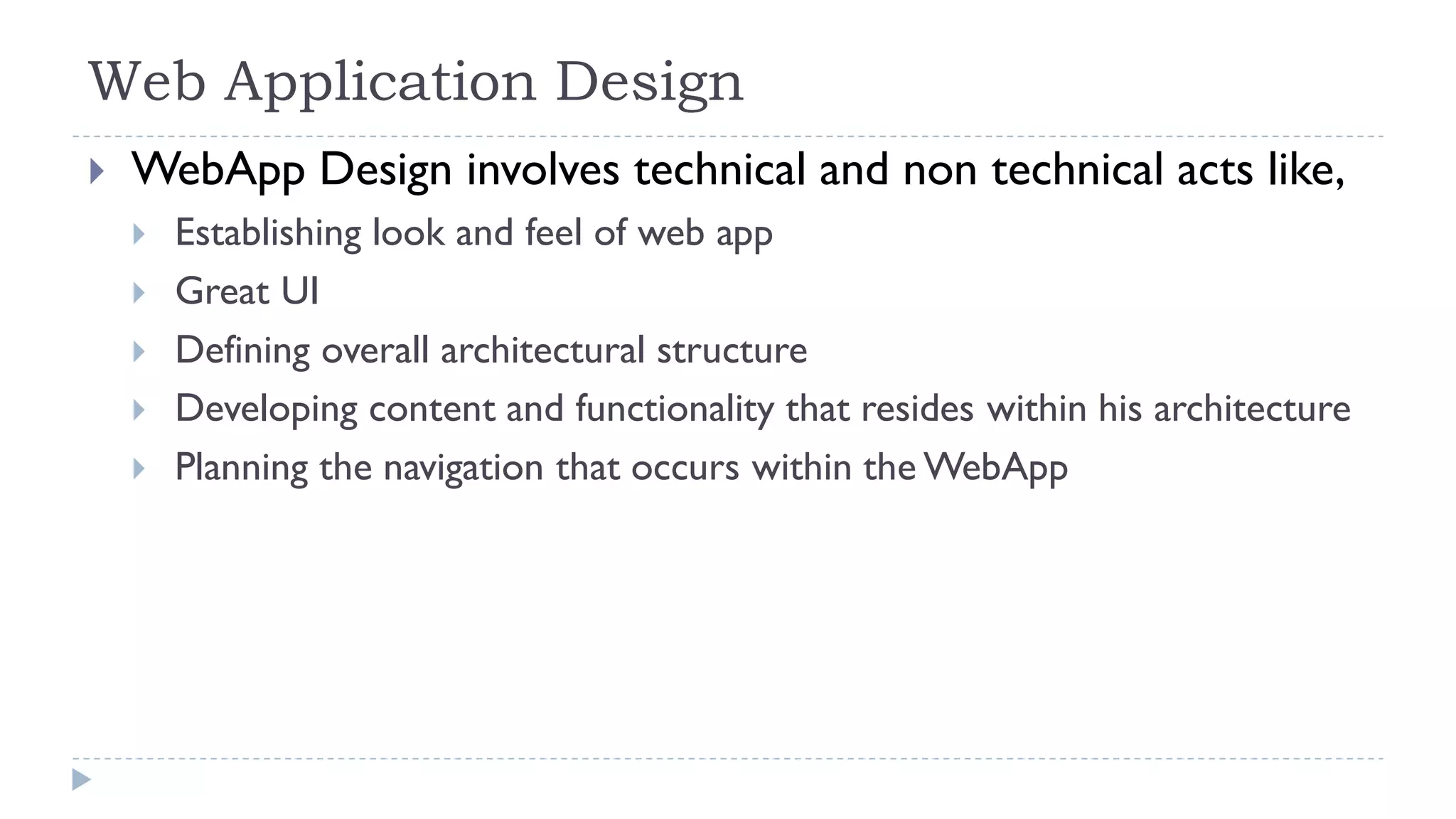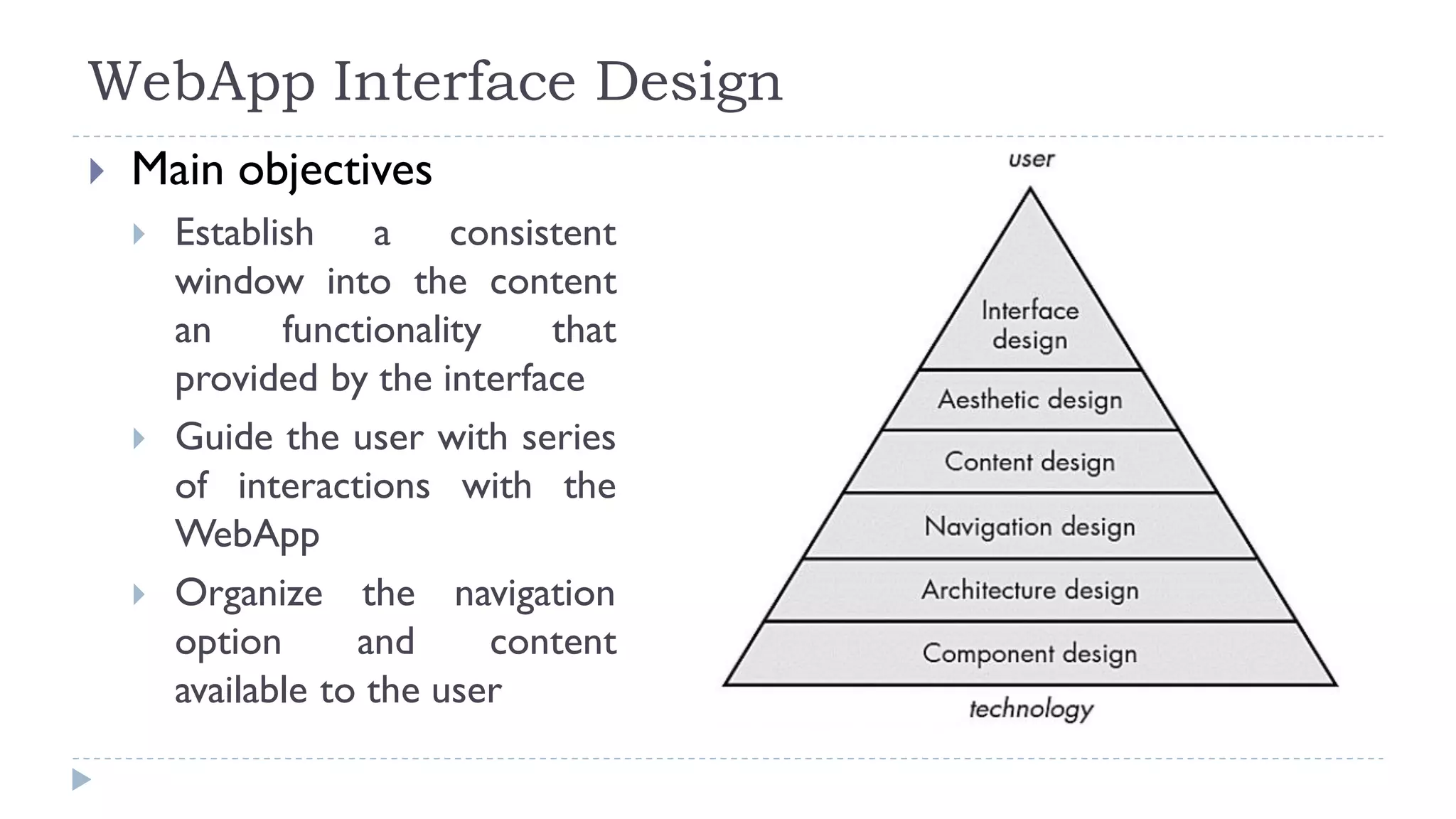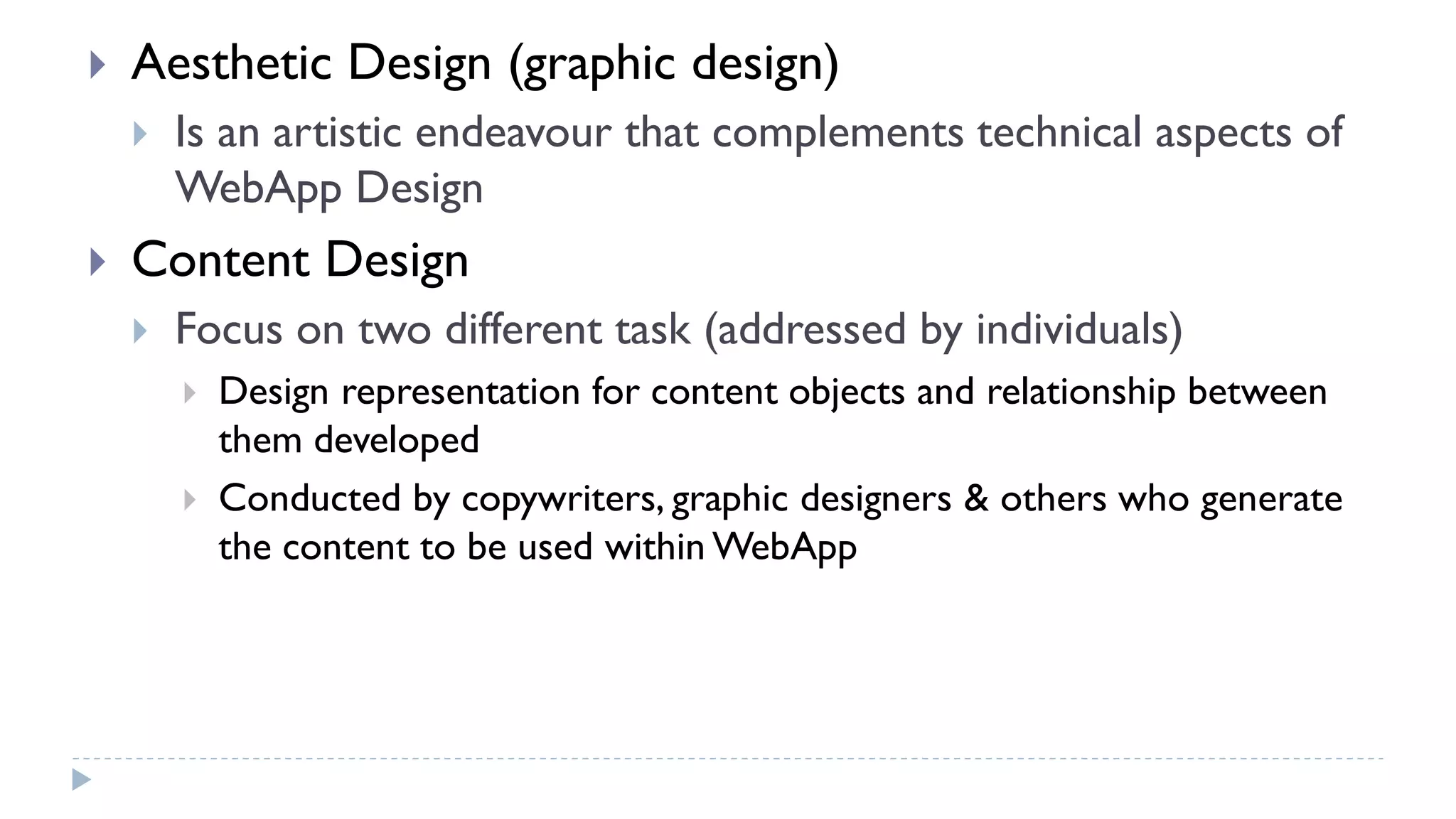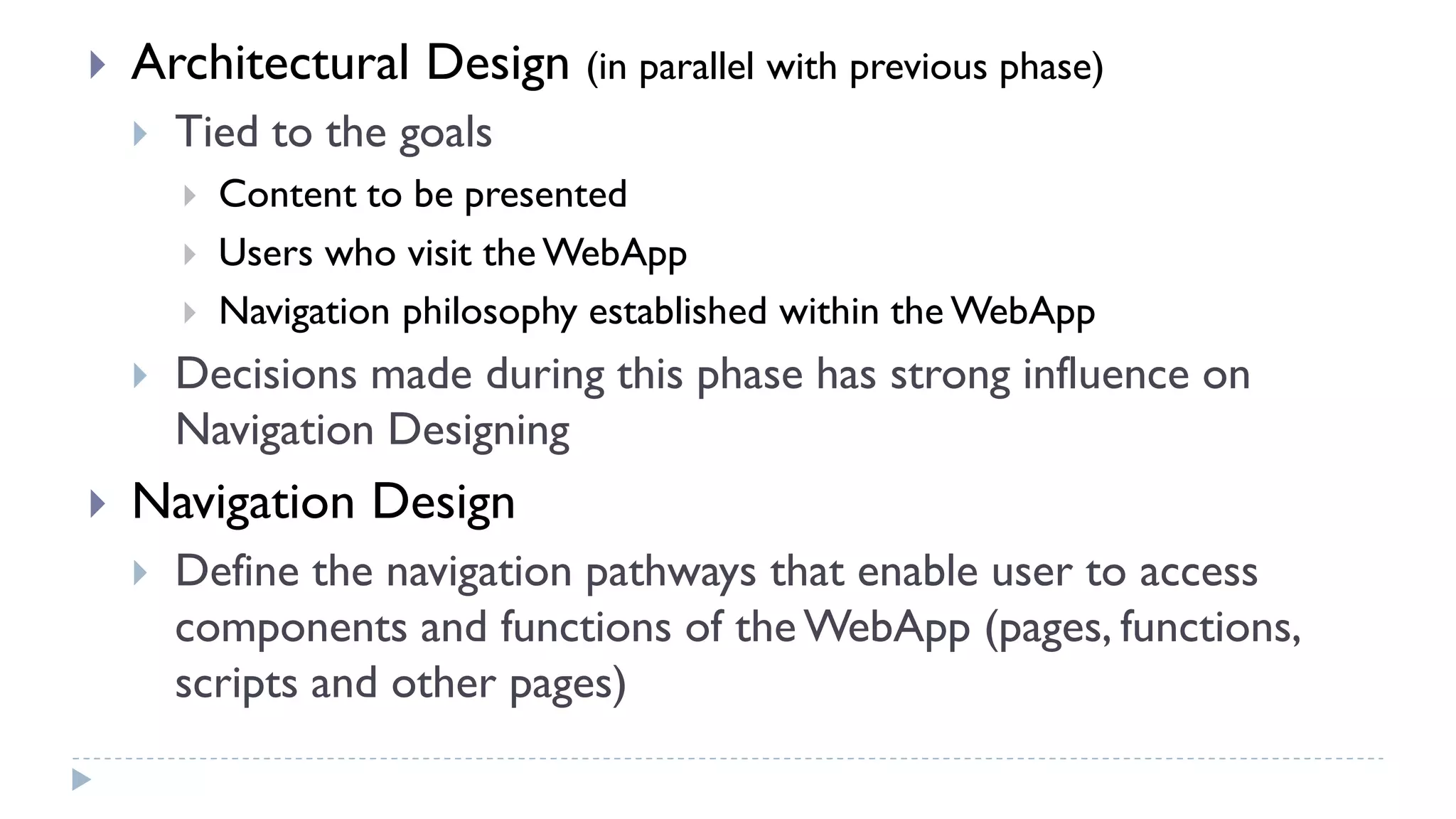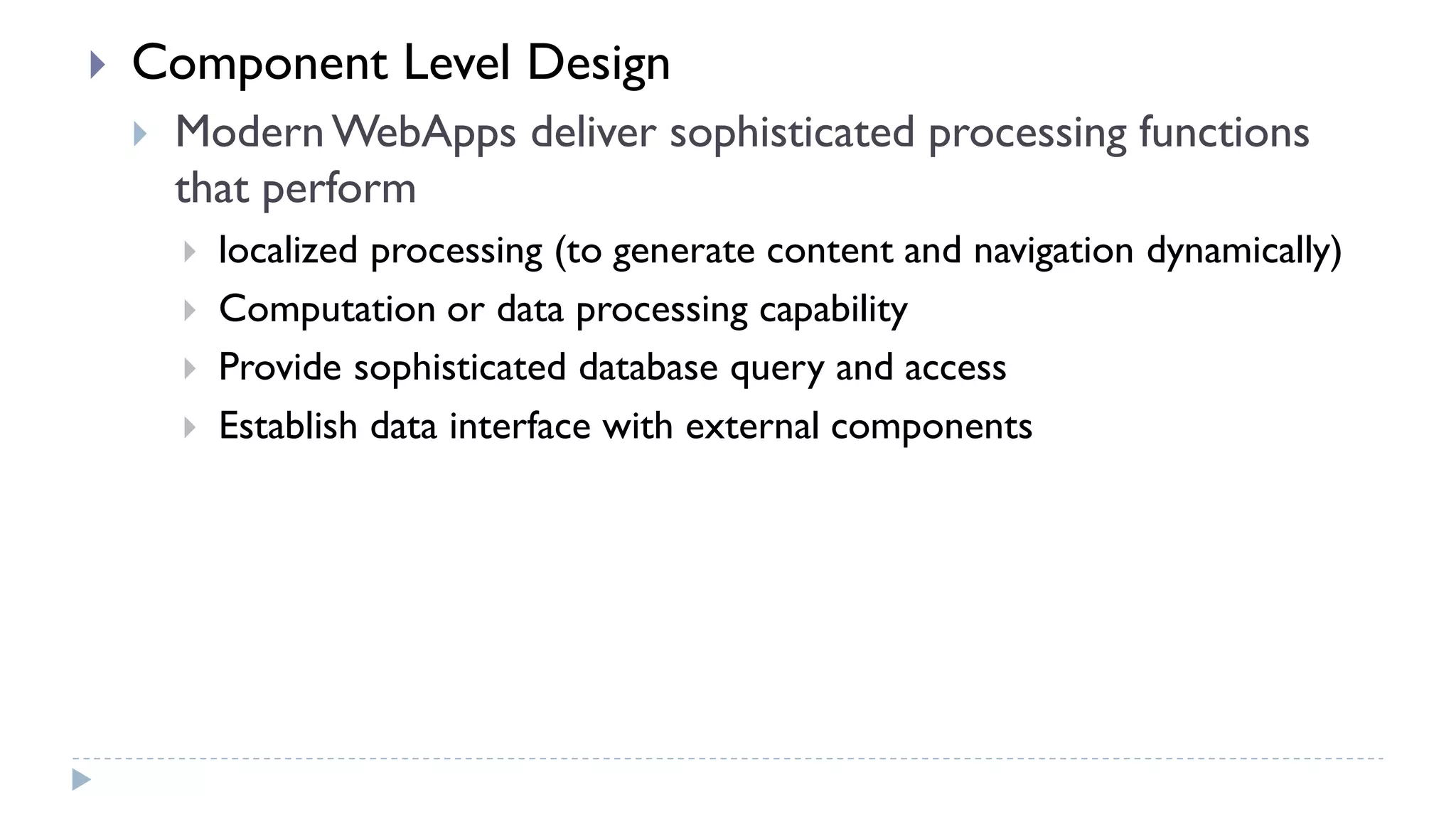The document outlines essential concepts in software design, emphasizing the importance of modeling, architecture, and modularity for effective problem-solving and implementation. It discusses design principles such as abstraction, information hiding, cohesion, and coupling while also defining various architectural styles, user interface considerations, and web application design. Additionally, it highlights the significance of proper communication among modules and the necessity of designing for flexibility and maintainability.
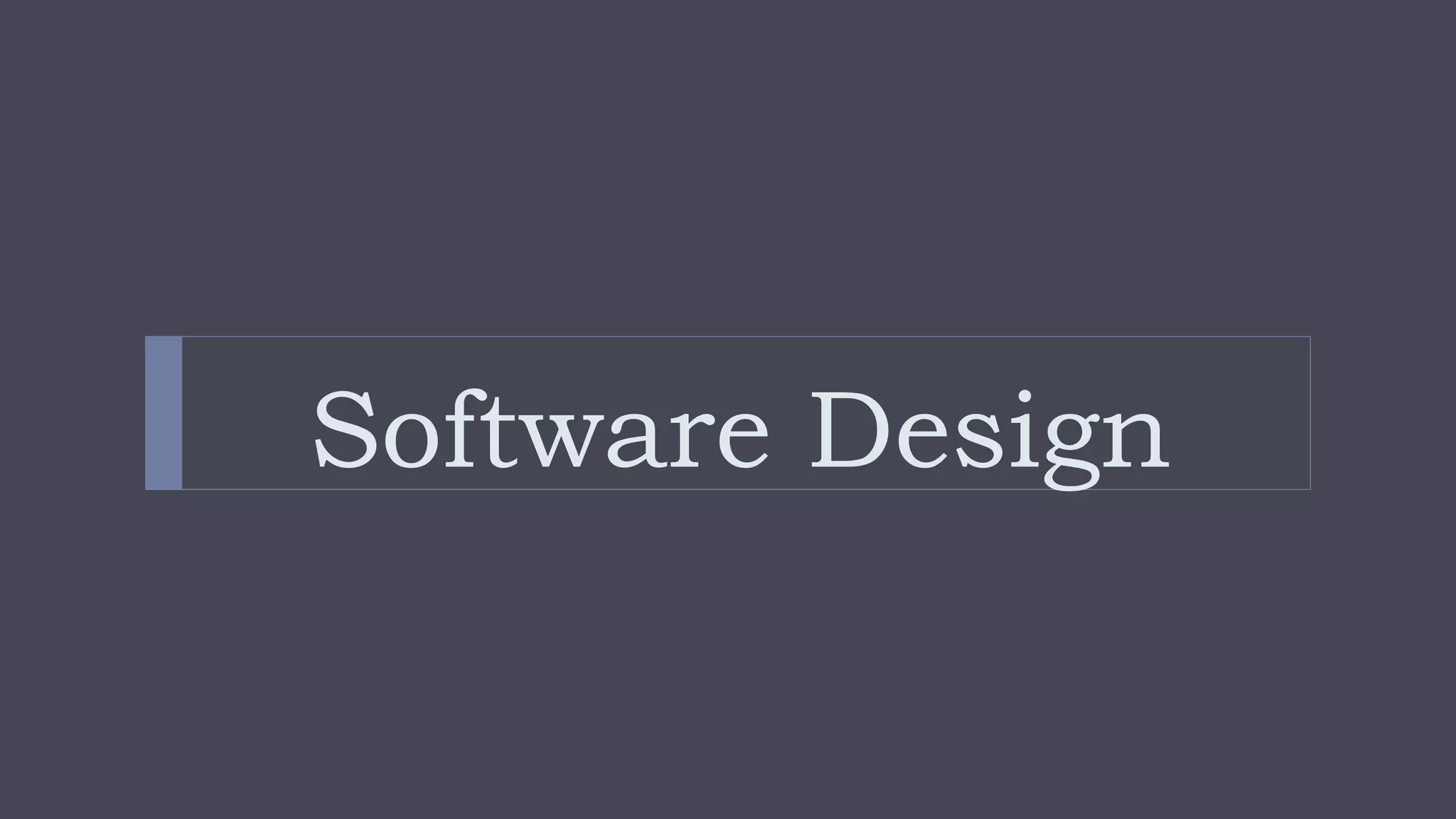
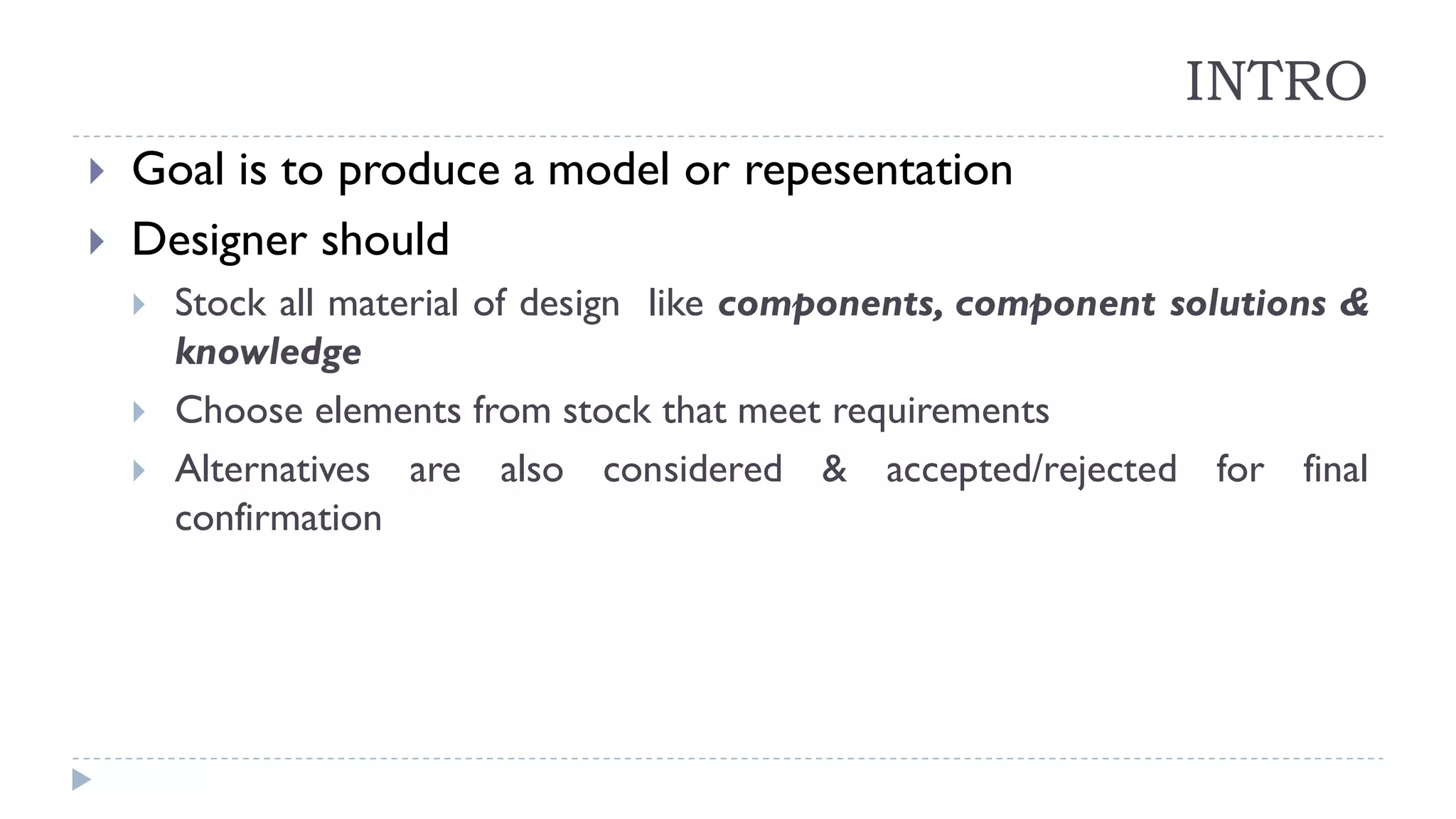
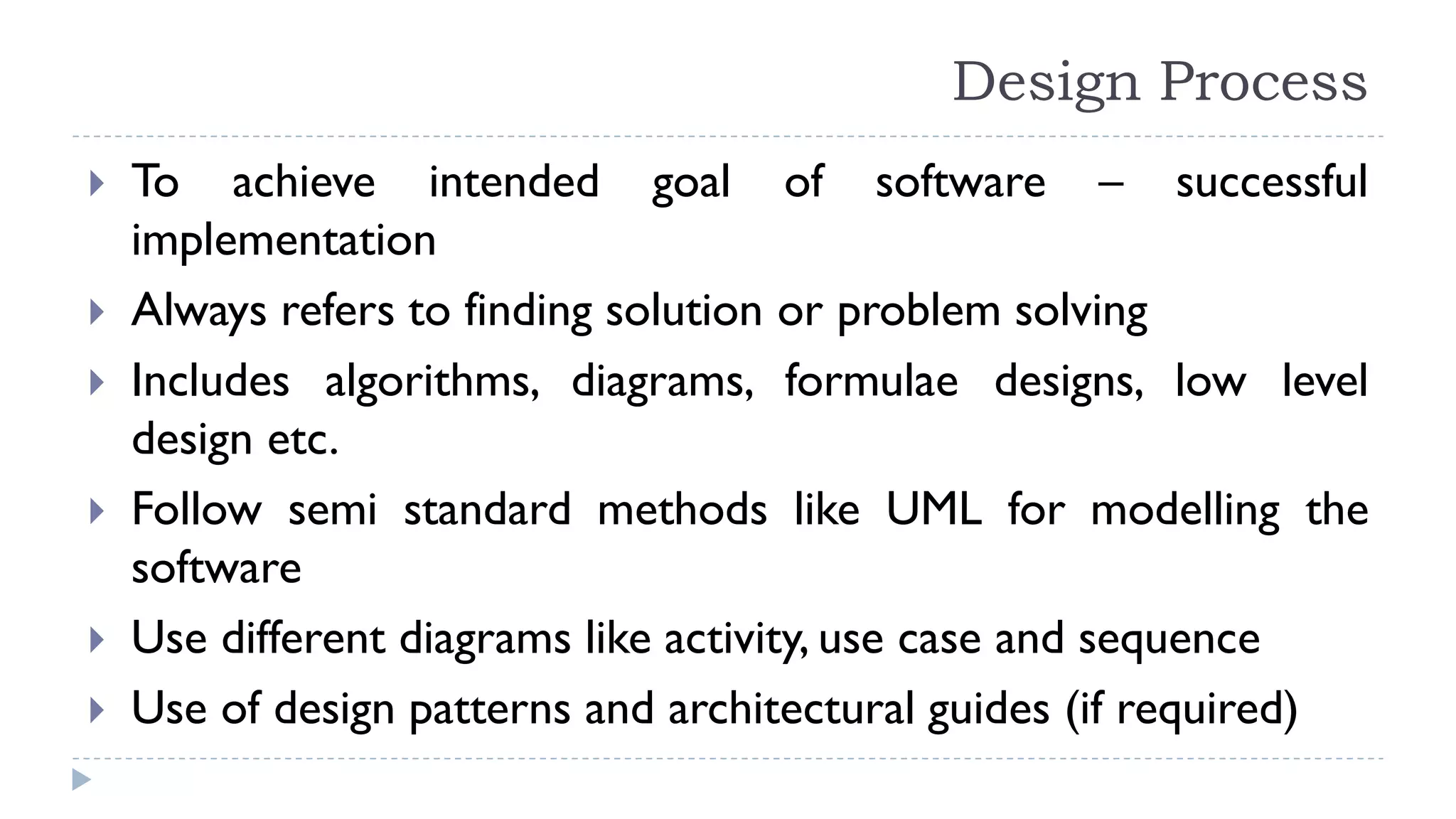
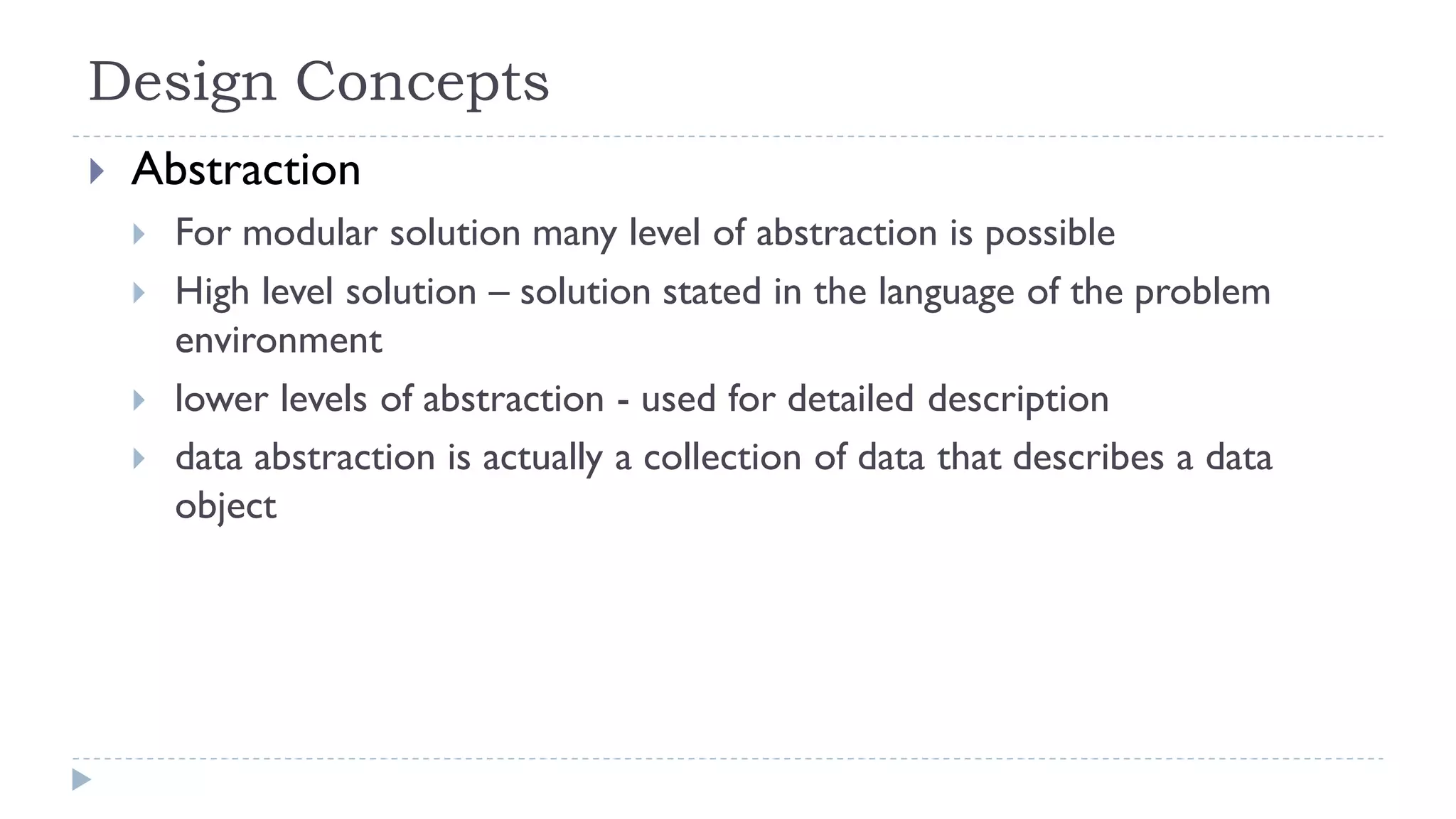



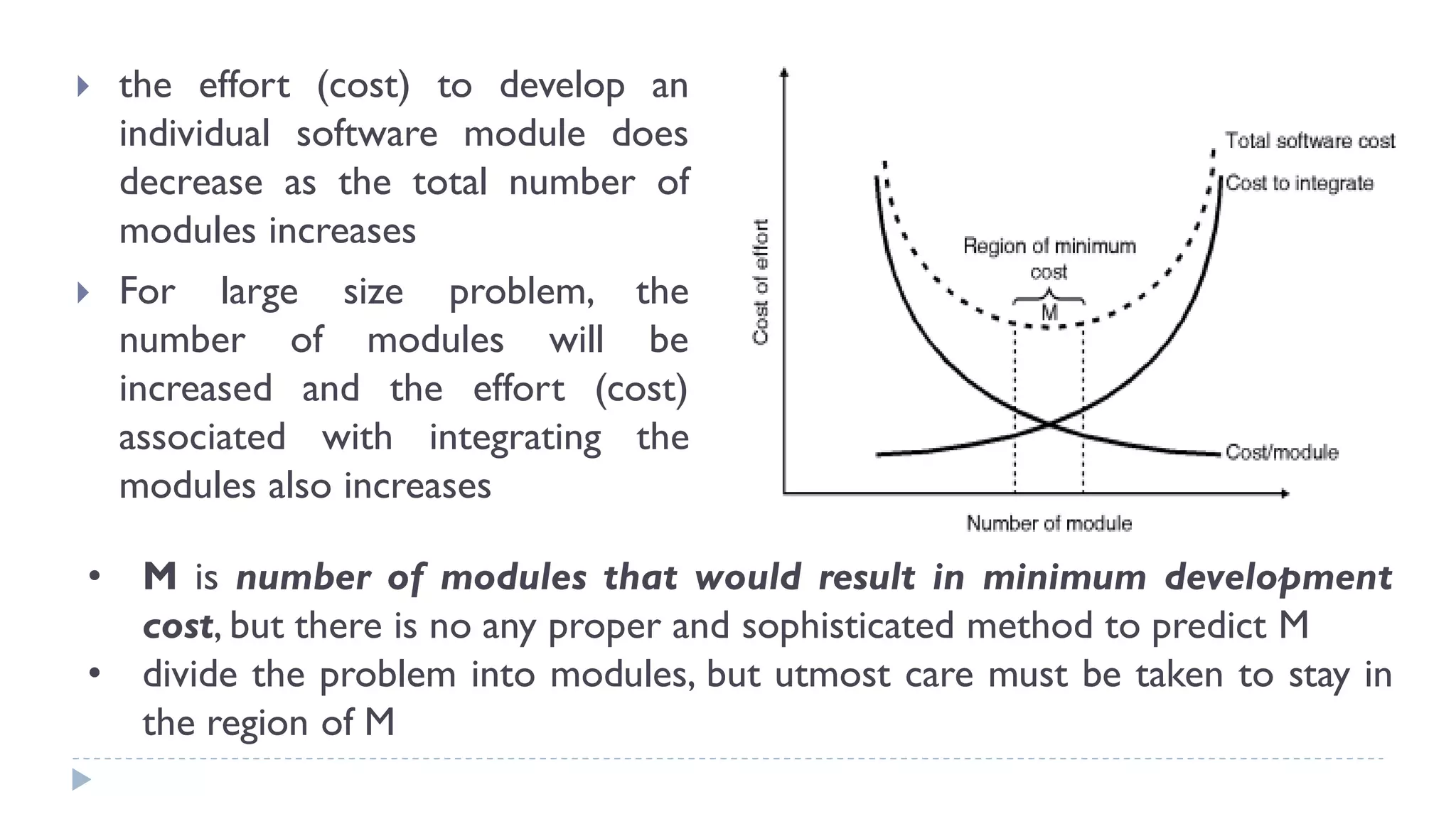
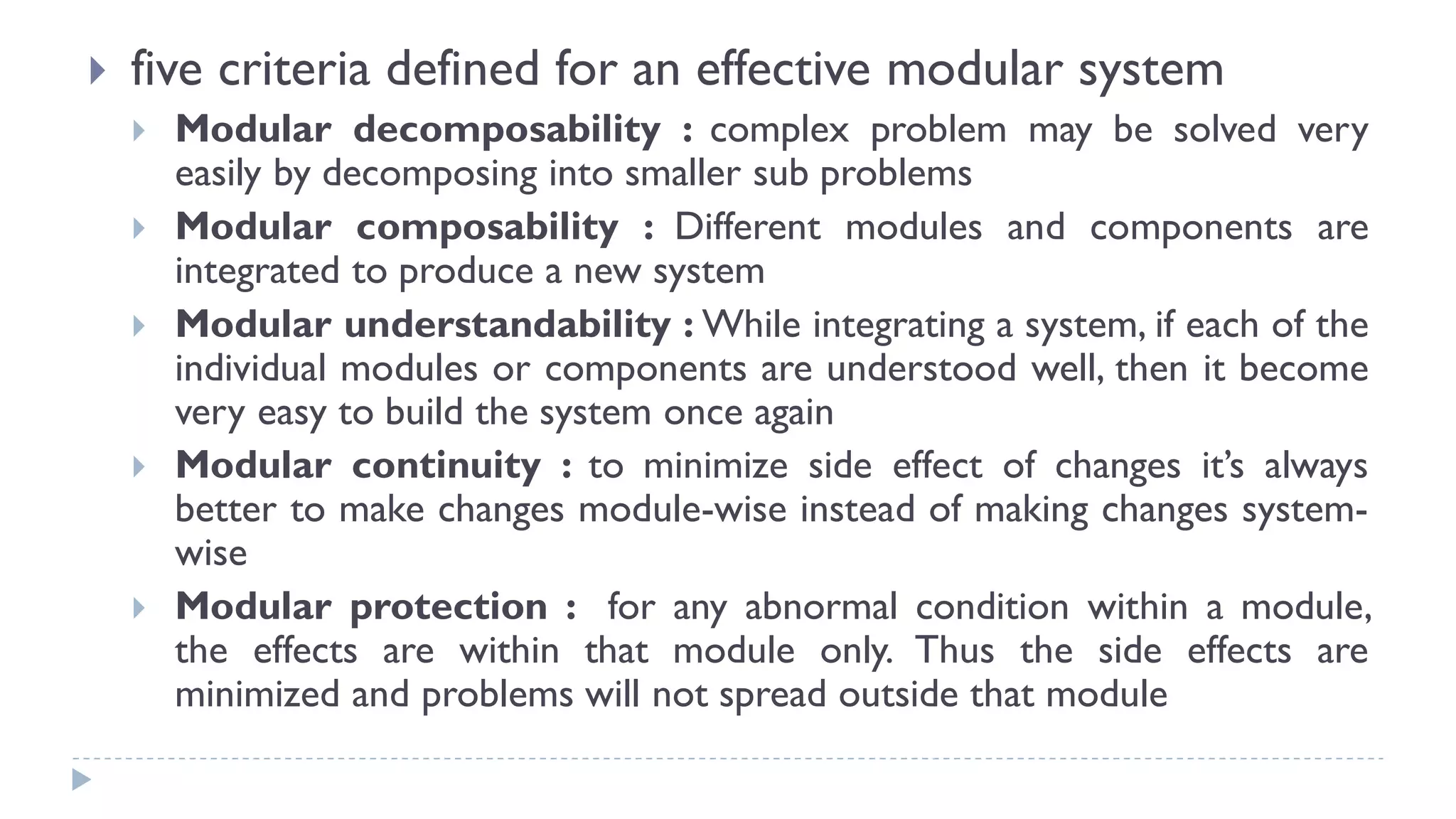
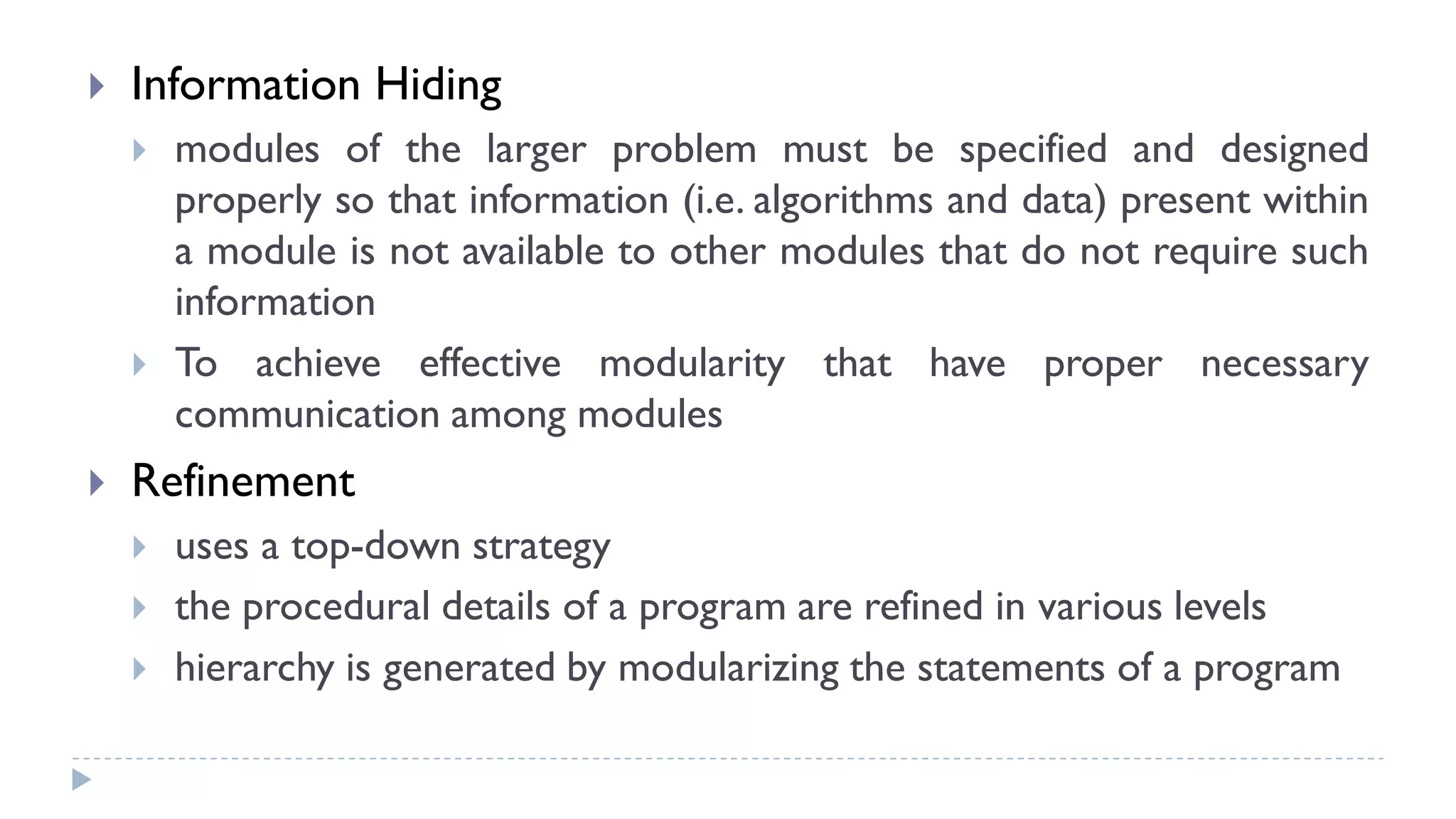

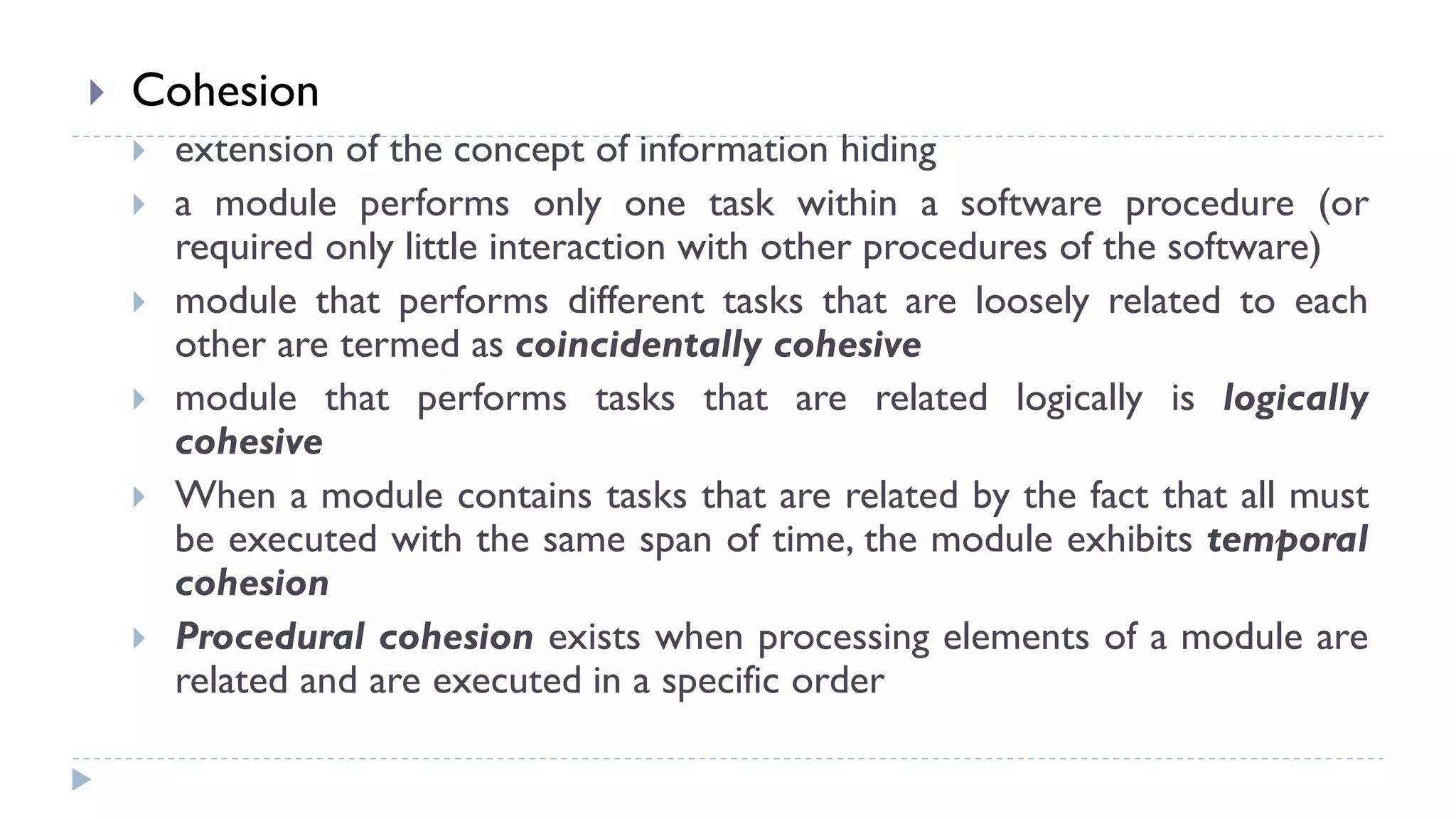
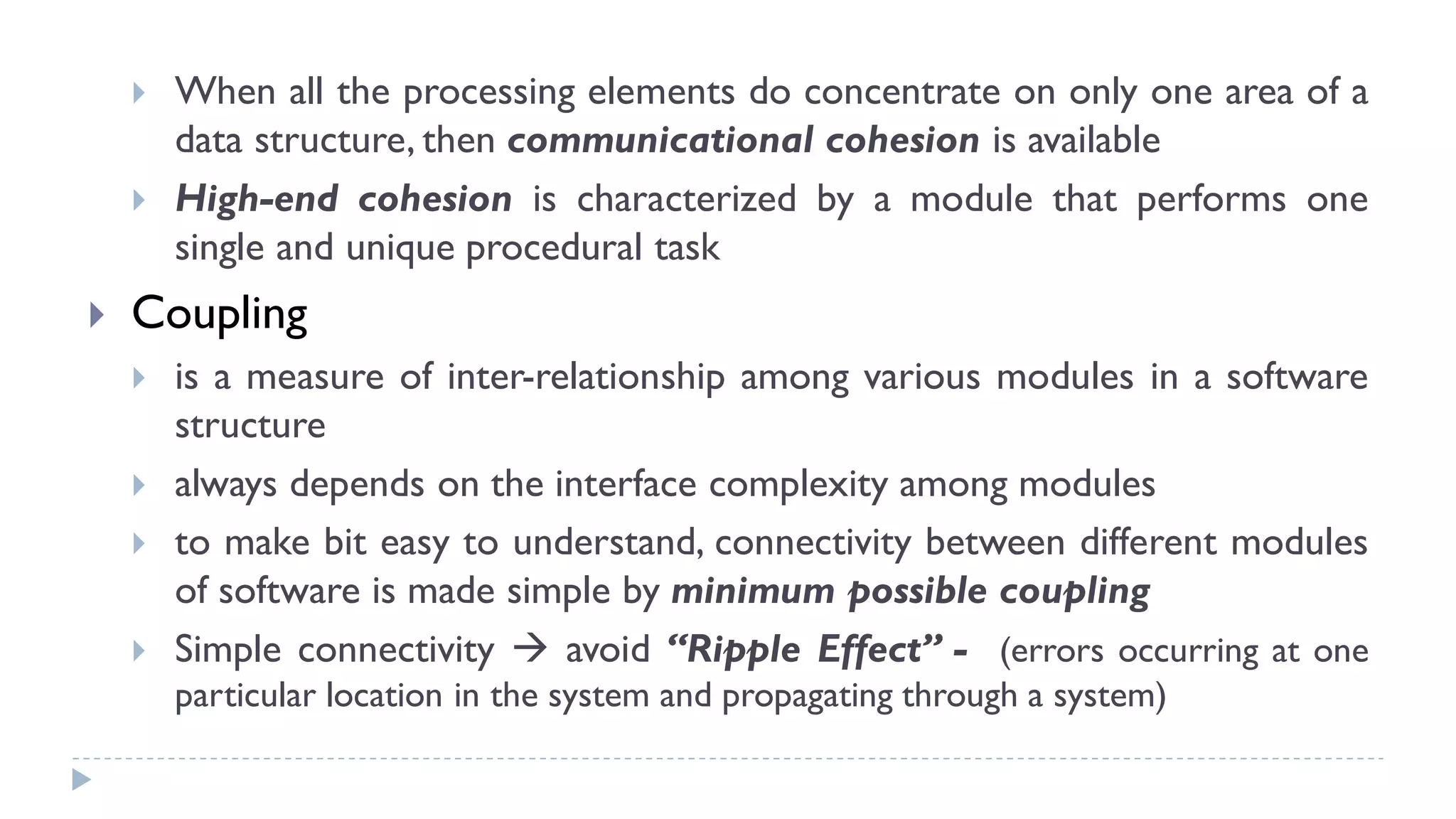
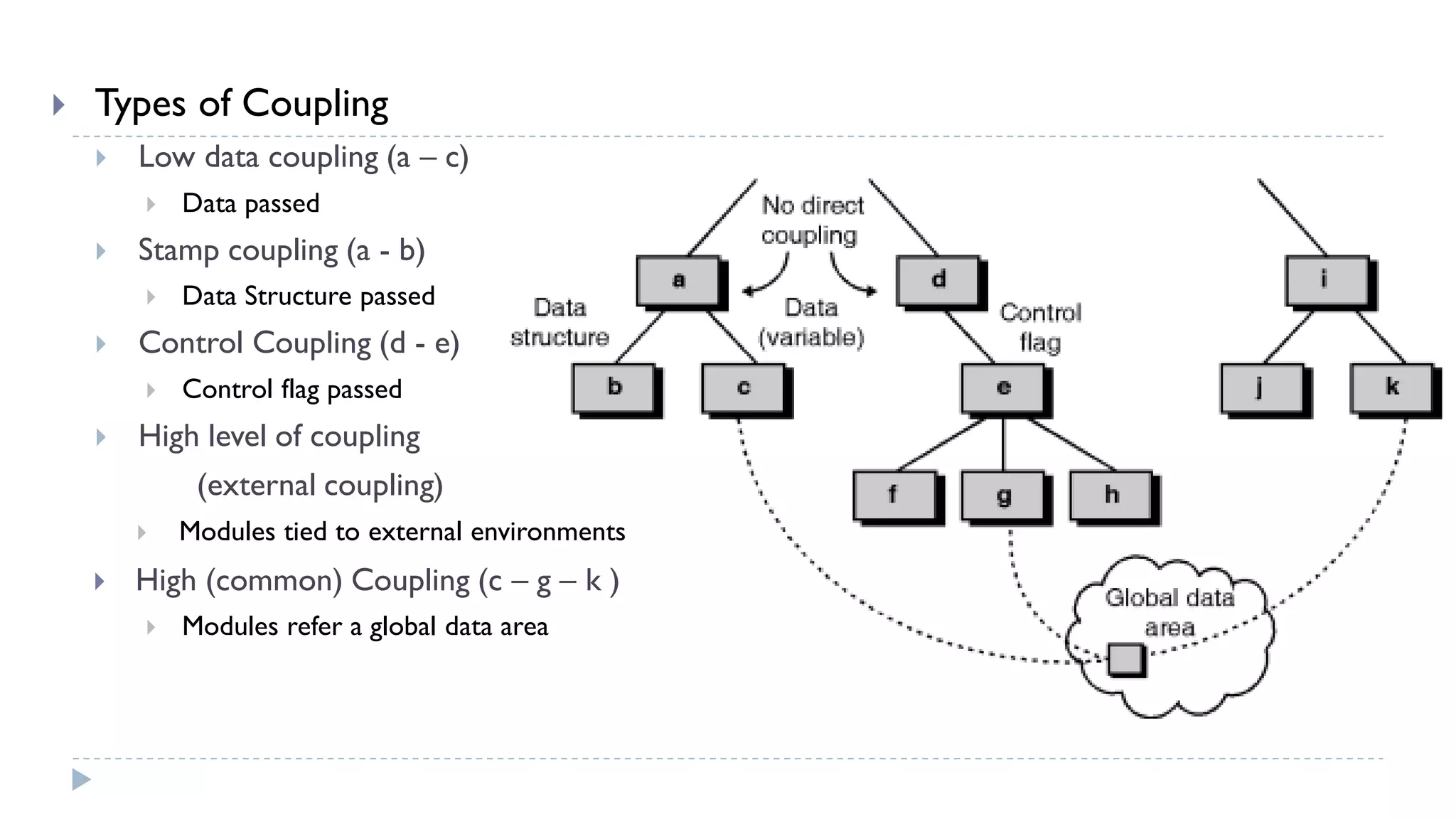
![ Refactoring
reorganization technique that simplifies the design (or code) of a
component without changing its function or behavior
it does not alter the external behavior of the code [design] yet improves
its internal structure
Importance
To improve quality of software
Improving the quality of the code, working becomes easier addition of new
code and maintenance of the code becomes easy
Improves the code over the period of time
Play important role in splitting long functions into reasonably small sub
functions
Helps in creating reusable codes
Error handling is much easier and within control](https://image.slidesharecdn.com/seunit5dssigning-170426075540/75/Software-Designing-Software-Engineering-15-2048.jpg)
